Surkhandarya – the cradle of ancient civilizations
The history of the Surkhandarya region has ancient roots dating back to the beginning of great civilizations. This unique place in Uzbekistan is known for its historical monuments and beautiful nature. The region is located in the foothills of Hissar, Bobotaga, Cohitang, which are famous for their beautiful landscapes and unique natural formations. The rich reserves of mineral water found in the region are an important source of recreation and have healing properties. A trip to Surkhandarya, will be a fascinating experience, during which you can get acquainted with the unusual landscapes of Uzbekistan, see colorful architecture, and immerse yourself in the unique culture of this region.
Canyon Kyzyl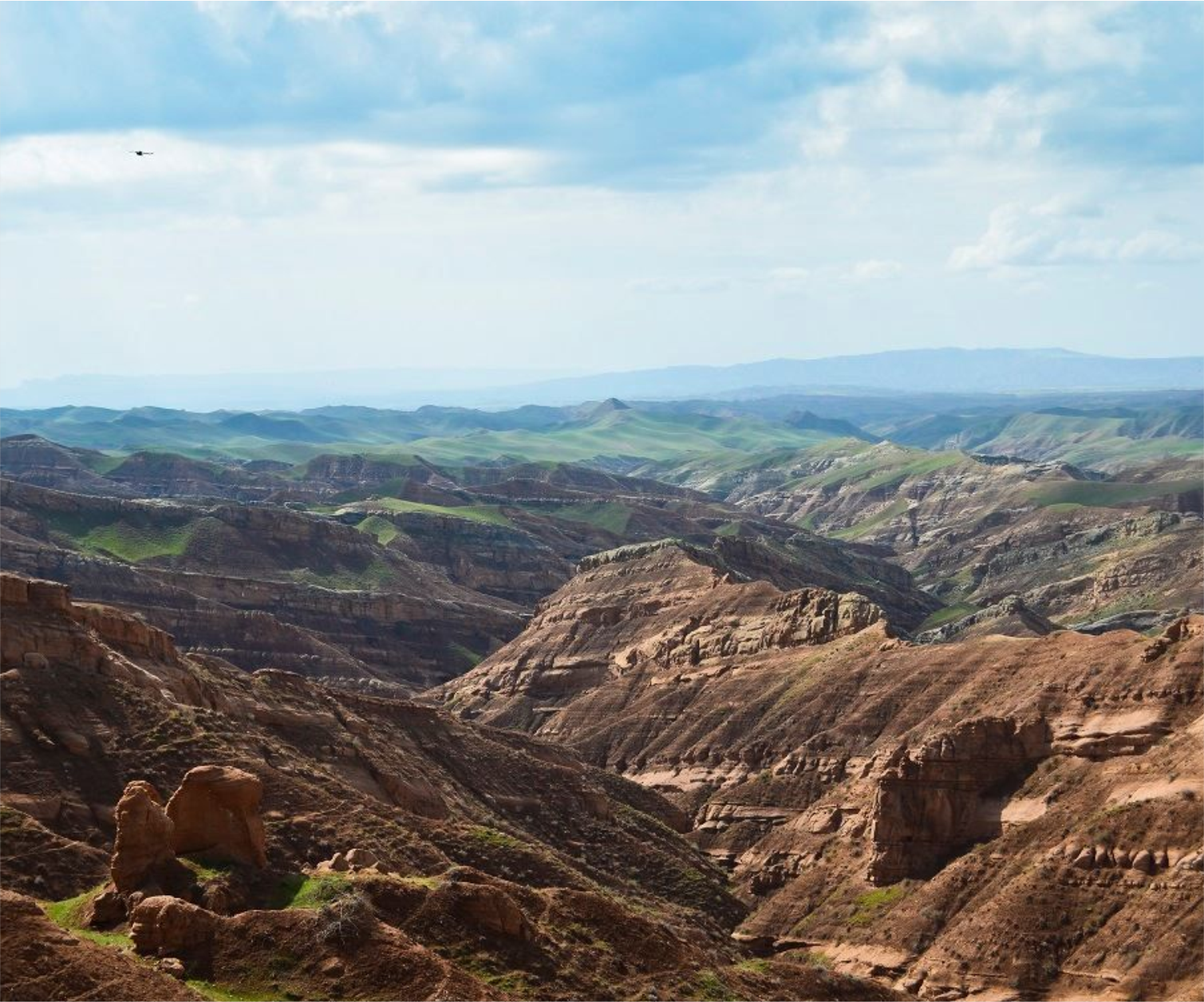
The Canyon Kyzyl, is located in the Surkhandarya region near the village of Baysun and is translated as “Red Canyon”. The length is 30 kilometers, and the highest point is Mount Buritakht, 1218 meters high. Here, nature has created breathtaking labyrinths, stretching for several tens of kilometers, and every turn of the relief, reveals amazing landscapes. In the spring season, the appearance of the canyon differs from the usual harsh stone appearance, since the surface is completely covered with different vegetation, among which rare medicinal herbs can be found. This place is truly amazing and deserves the status of one of the wonders of Uzbekistan.
Cave Boy-Bulok
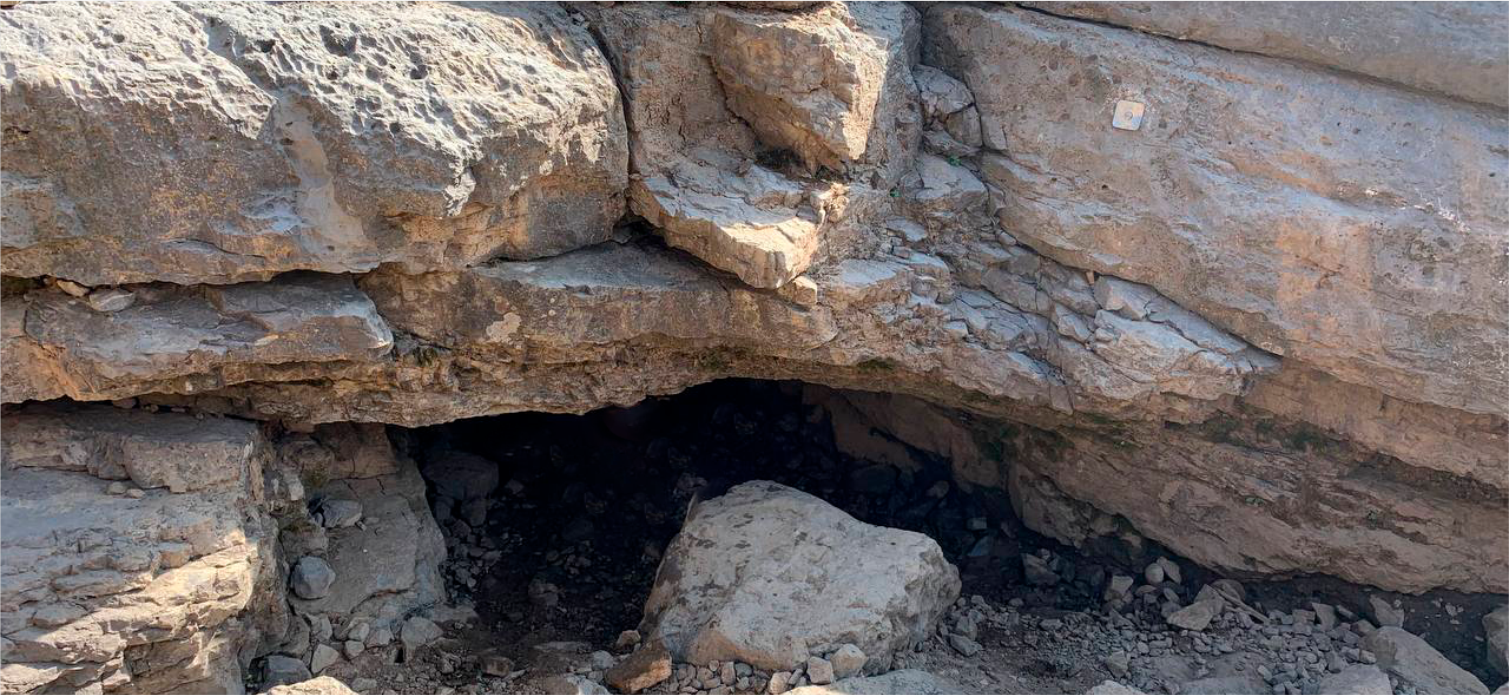
In the Chul-Bair Mountain range, located in the Surkhandarya region, there is an amazing cave, called Boy-Bulok. It is considered the deepest in the entire Asian continent and reaches a depth of an impressive 1415 meters. Boy-Bulok is located 60 kilometers from the regional center of Baysun, and is a technically complex facility classified as the fifth complexity category. In 1985, the first study of this unique place was carried out. Various obstacles were found inside the cave, including vertical bends, narrow vertical shafts up to 180 meters deep, and water-filled passages called half-siphons and siphons. Boy-Bulok has an impressive size that extends both down to a depth of minus 1158 meters, where the impenetrable siphon is located, and up to 359 meters. The very impressive amplitude – is 1517 meters. Boy-Bulok, located at a depth of 1283 meters, is connected with Vishnevsky Cave. These two caves have a potential connection that is 2033 meters deep and extends for about 30 kilometers. This makes Boy-Bulok the third deepest cave in the world.
Massif Khoja Gur Gur ota
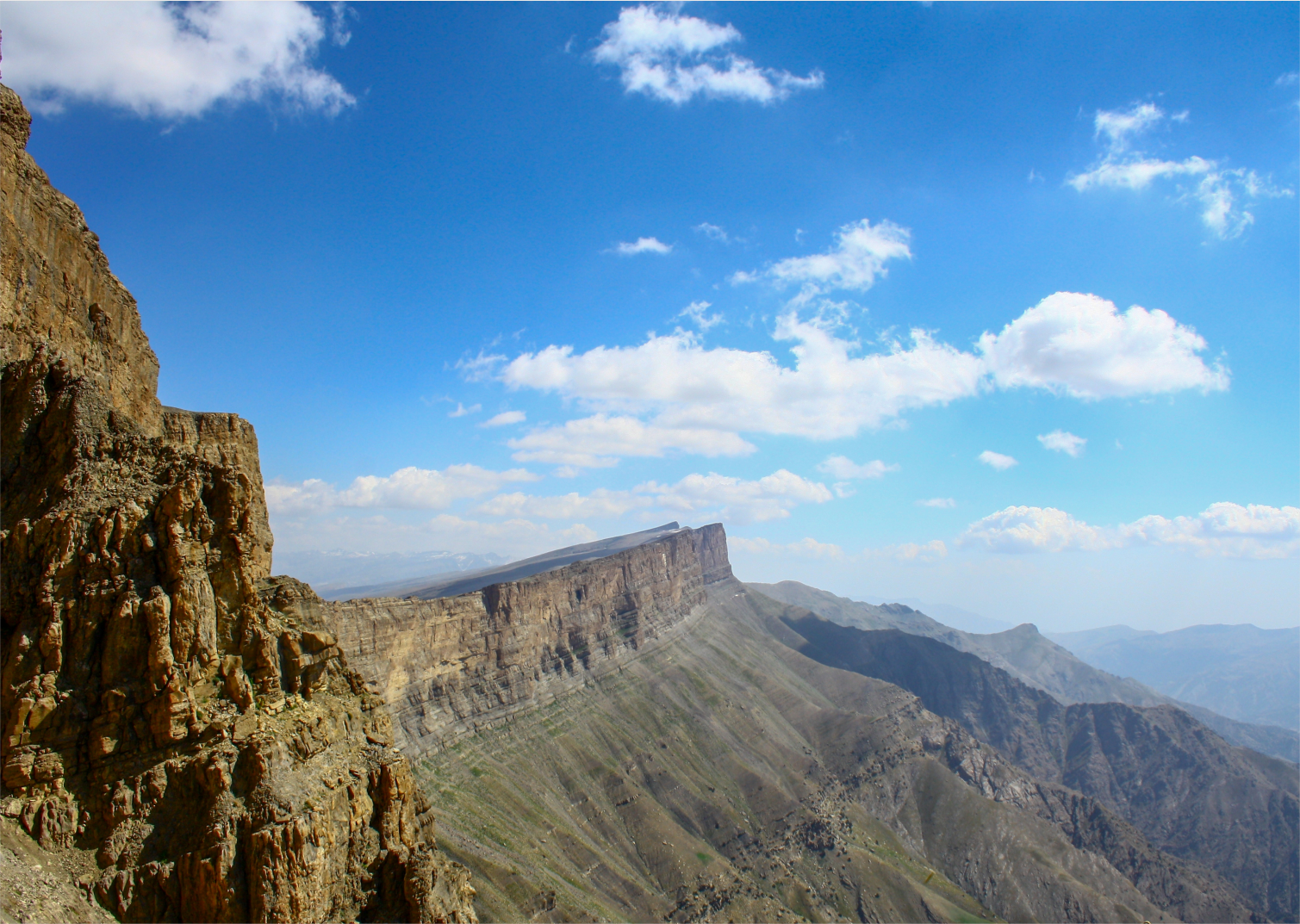
In translation, Khoja Gur Gur ota means “Father of all caves.” At an altitude of 3700 meters above sea level, there is a remote region of harsh and very wild nature. The gigantic, sloping peak of the mountain range ends with an impressive 500-meter-high cliff on one side, and deep canyons with cracks tearing the plateau on the other. Here can be seen fossilized traces of dinosaurs, fragments of basalt and crushed stone of the most bizarre shapes, as well as the burial place of the holy righteous man Khumajoy-ota. The slope of Khoja Gur Gur ota extends vertically and has entrances to many caves, many of which have not yet been explored. In addition, upon reaching the highest point of the massif, you will feel like you are standing on a huge wall separating one world from another.
Machay Cave
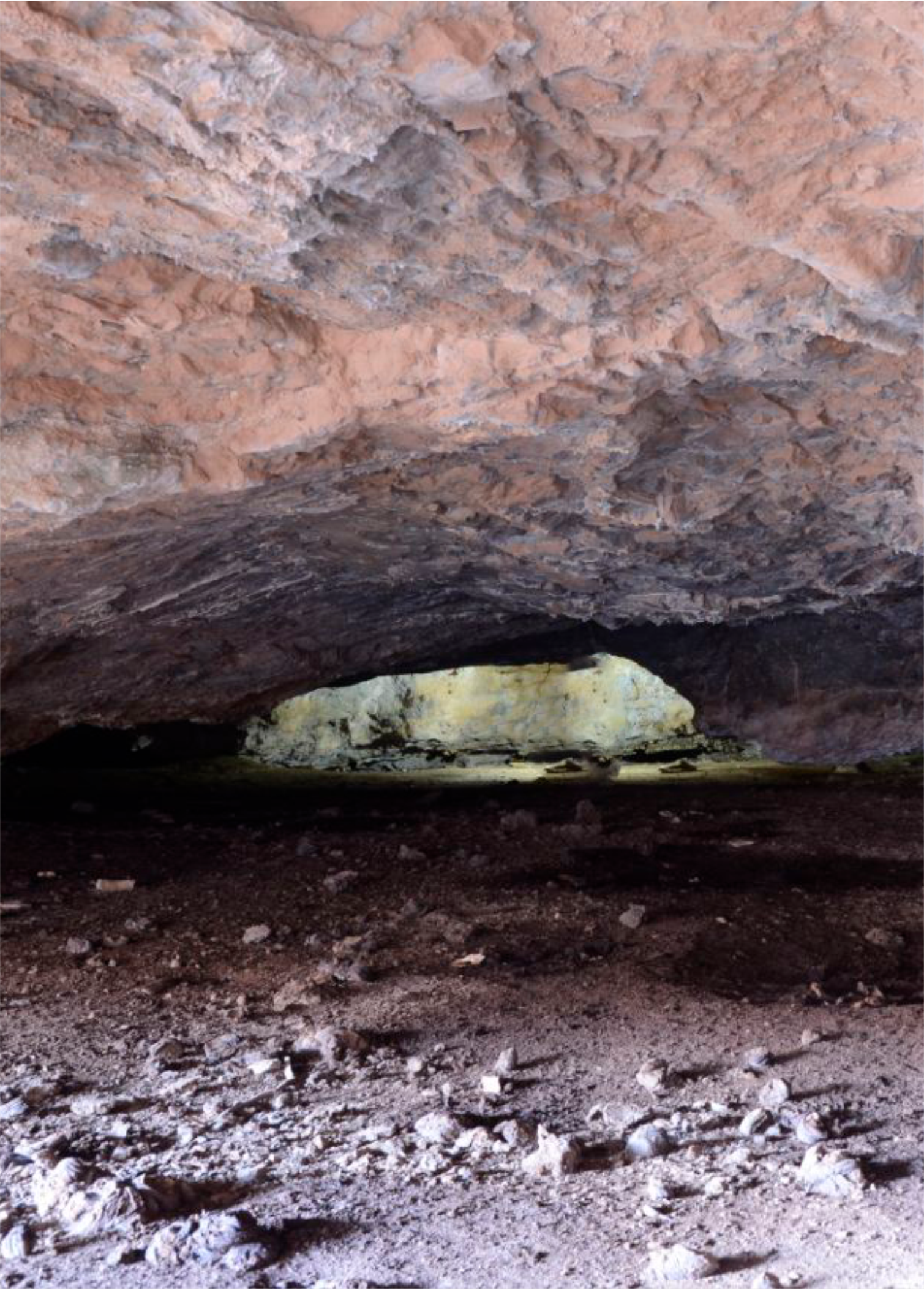
Machay Cave is another settlement of primitive people, which is located in the Baysun district of the Surkhandarya region. It is located near Mount Cohitang, on the right bank of the Machay River. The cave is 3.4 to 4 meters high, about 8 meters long and about 10 meters wide. It consists of two cultural layers: the upper layer belongs to the Mesolithic, and the lower layer belongs to the late Mesolithic and early Neolithic. Inside the cave, bones of a man and a woman were discovered that date back to the Mesolithic period. Of great interest to the scientific community is the availability of material evidence of how people lived in the Stone Age. As a result of research, an abundance of artifacts was discovered in Machay Cave, which indicates the way of life of those times. The finds included 87 different stones, hundreds of weapons made from the bones of 15 different animal species, as well as stone knives, axes, handles, sawtooth weapons, arrowheads, bows and spears. The inhabitants of Machay Cave used these various weapons to skin domestic and wild animals and then use them to make clothing for themselves. These findings are of great value to the scientific community, as they allow us to better understand the lifestyle of people of that time.
Sangardak waterfall
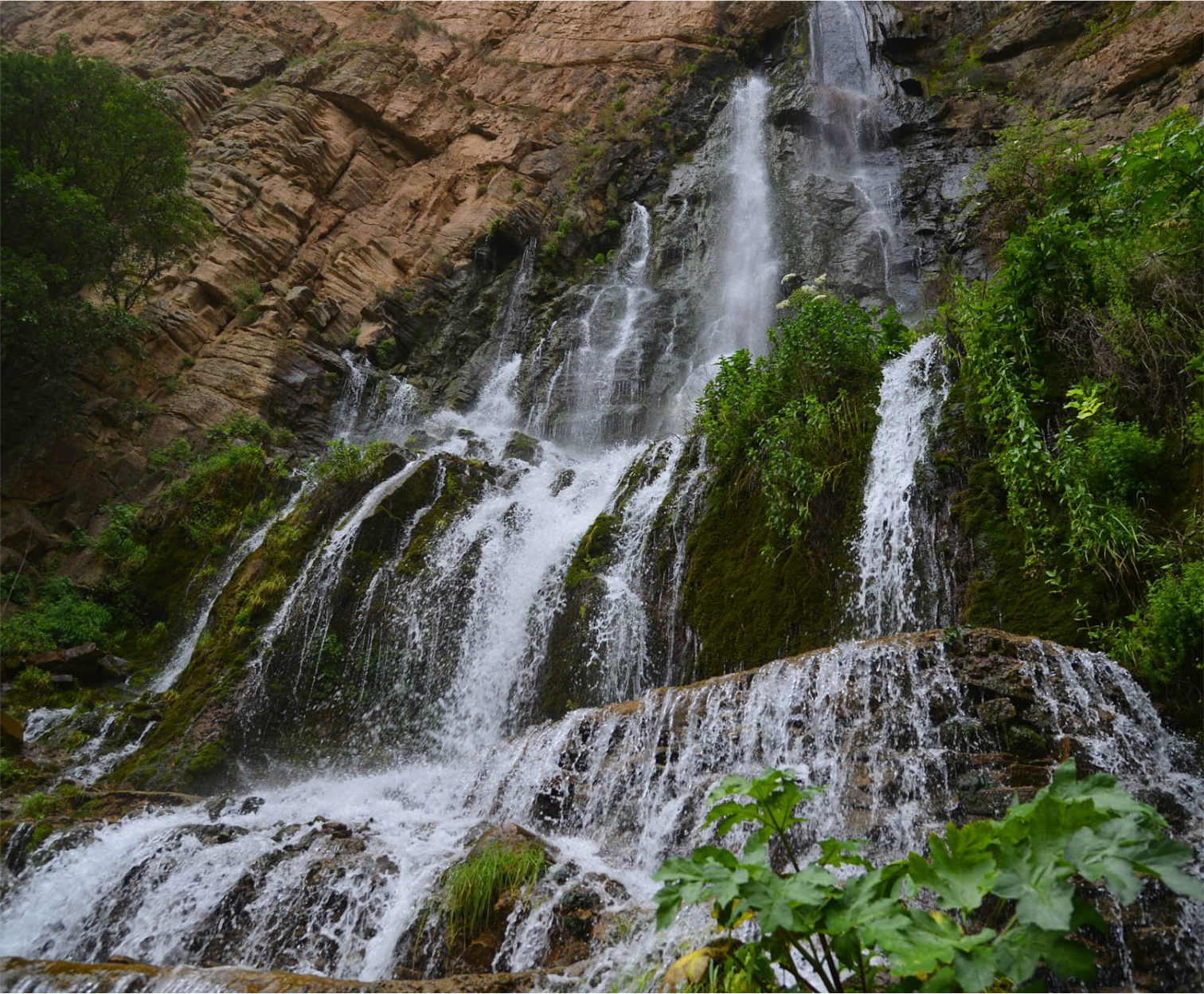
The Sangardak waterfall is located among the gorges of the Surkhandarya Mountains, being one of the wonders of the country's natural world. The waterfall is located in the Sariasi region and is located 205 kilometers from Termez, and 30 kilometers from Denau. The Sangardak waterfall is formed from karst waters flowing inside caves, and not from a mountain river. Thus, people have various legends about the waterfall and believe that it has healing properties. In addition, it should be noted that even the ancient Arabs, Greeks, rulers of Transoxiana and other peoples came to admire the waterfall.
Teshik-Tash Cave
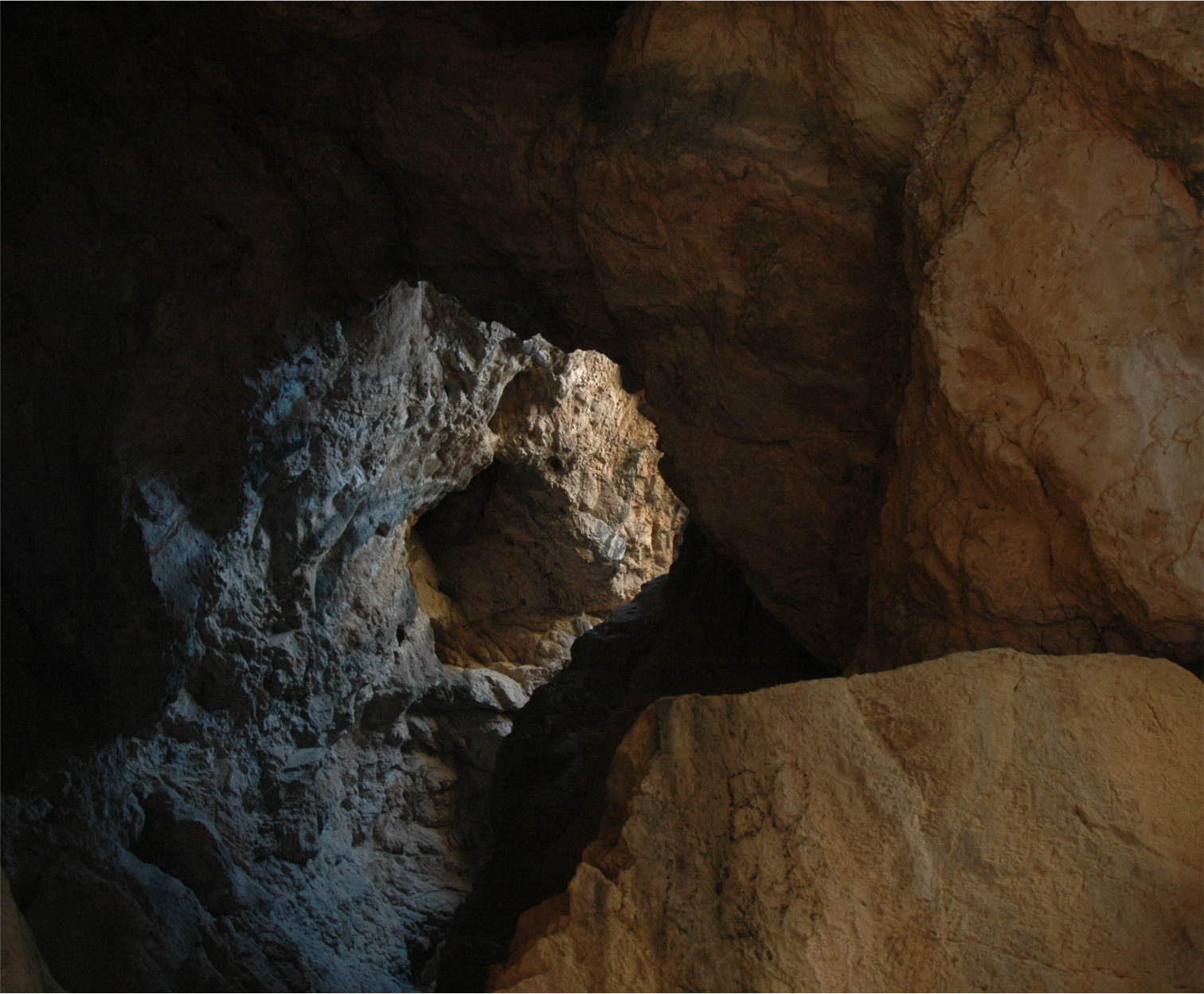
The Teshik-Tash cave is located on the slopes of the Baysuntau mountains. In 1938, during excavations, archaeologists discovered an ancient burial there. Scientists discovered five cultural layers 1.5 meters thick. Clay layers and crushed stones separated the layers. The remains of a Neanderthal child are the most famous finding in the cave, which became famous throughout the world and made the site well-known. Soviet archaeologist A.P. Okladnikov, who discovered these remains, subsequently received the Stalin Prize.
Zarautsay Gorge
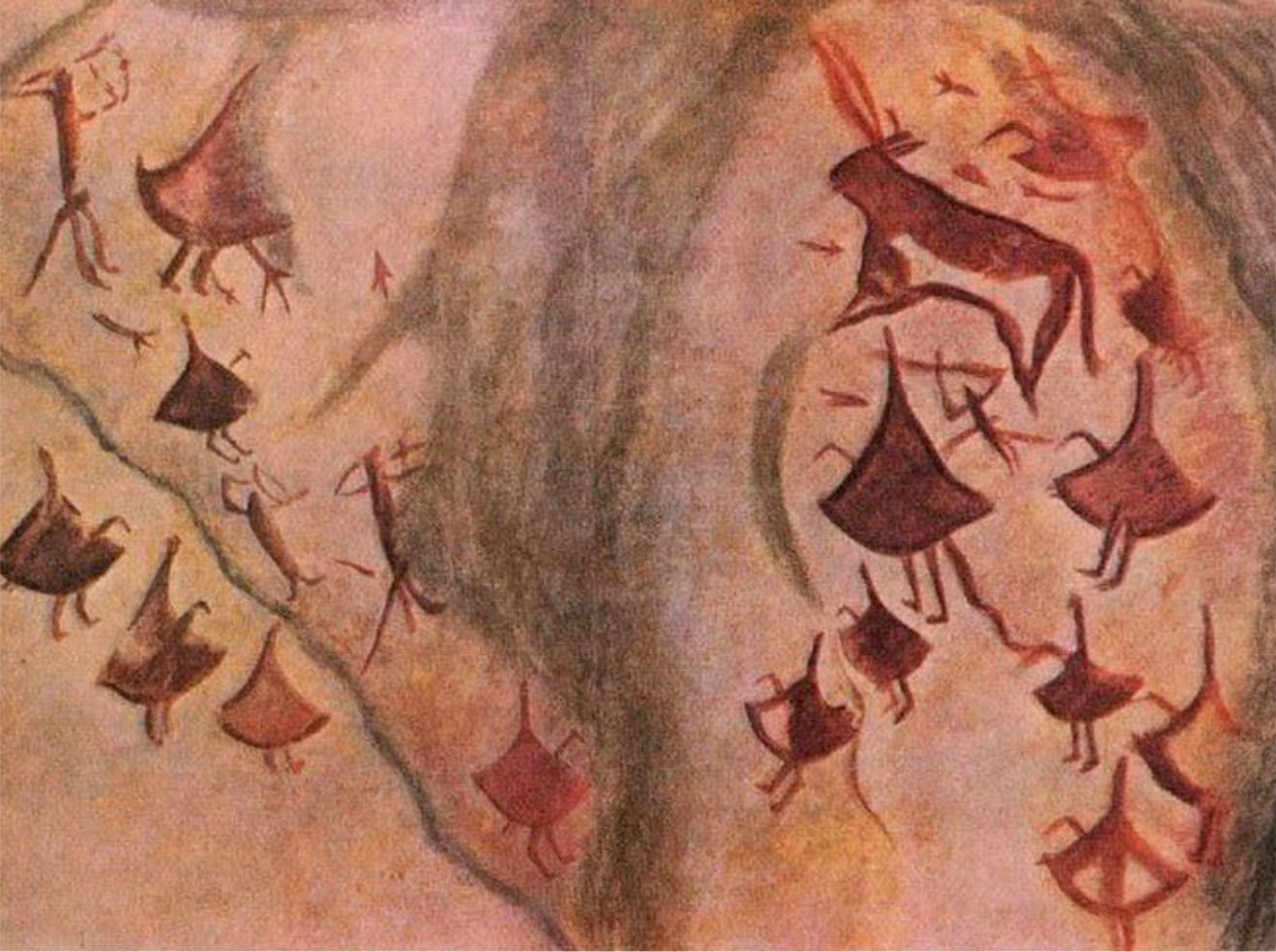
The gorge is located in the Kugitang mountains in the Surkhandarya region. These are the southwestern spurs of the Hissar ridge. The discovered cave paintings are rare examples of primitive art. All rock paintings in Zarautsay are written in red ocher, unlike other petroglyphs in Uzbekistan. Impressive hunting scenes with running bulls, goitered gazelles, saigas, arrows, chasing dogs and people with bows and axes, as well as mysterious hooded figures who clearly carry out rituals associated with hunting, can arouse interest and surprise among viewers of this unique ancient art person. Of the 200 images found in 1940, only 40 have now survived in the Zarautsay grottoes.
Dinosaur tracks
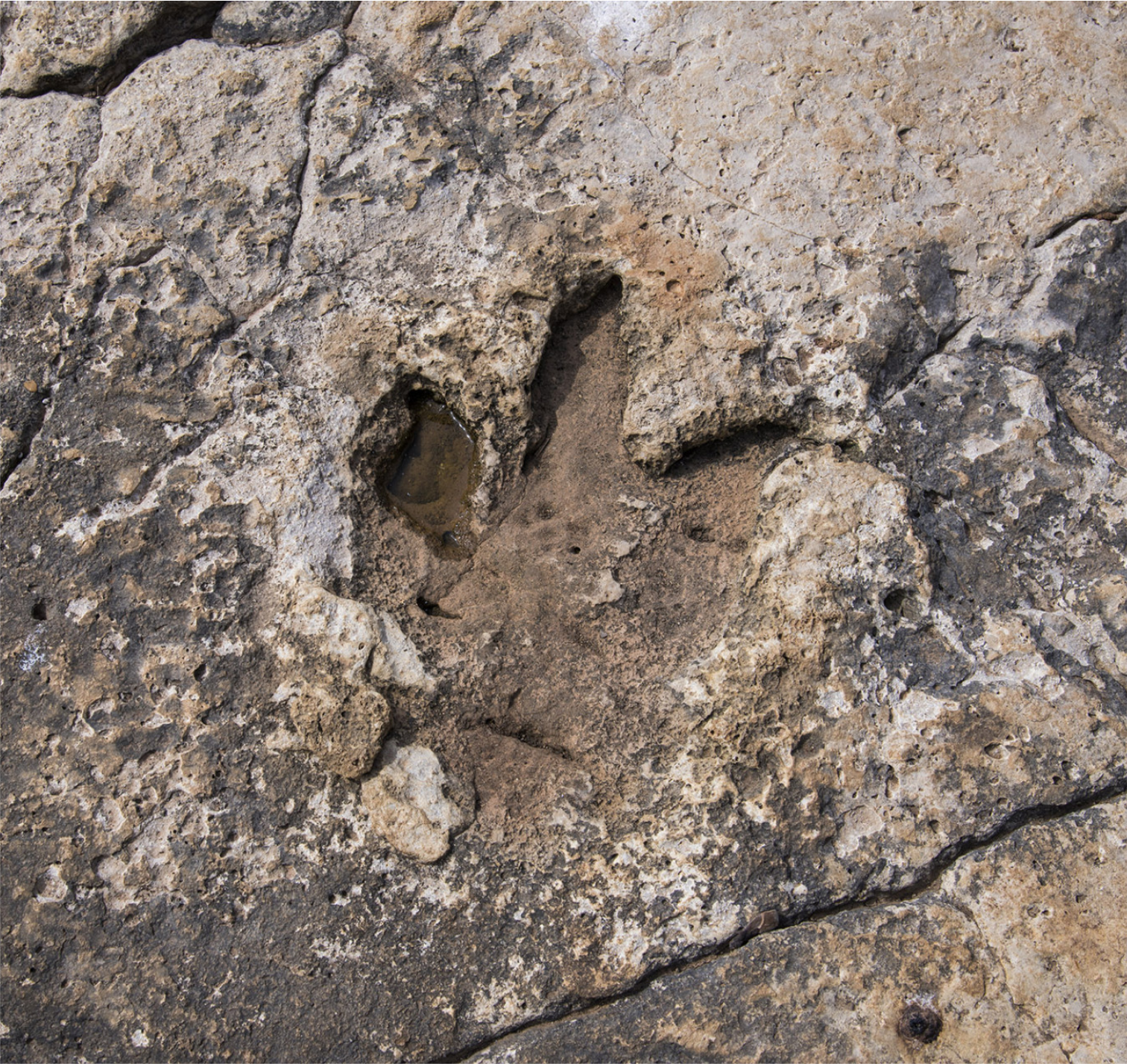
Traces of hoofed dinosaurs were discovered in the limestones of the Cretaceous period in the village of Gumatak. The footprints are on a stone slab, which is easily accessible from a car after walking only 300 meters. Speleologists have also discovered traces of other large dinosaurs in Surkhandarya, but to see them you will need to make a separate trip.
Karyshoto Gorges
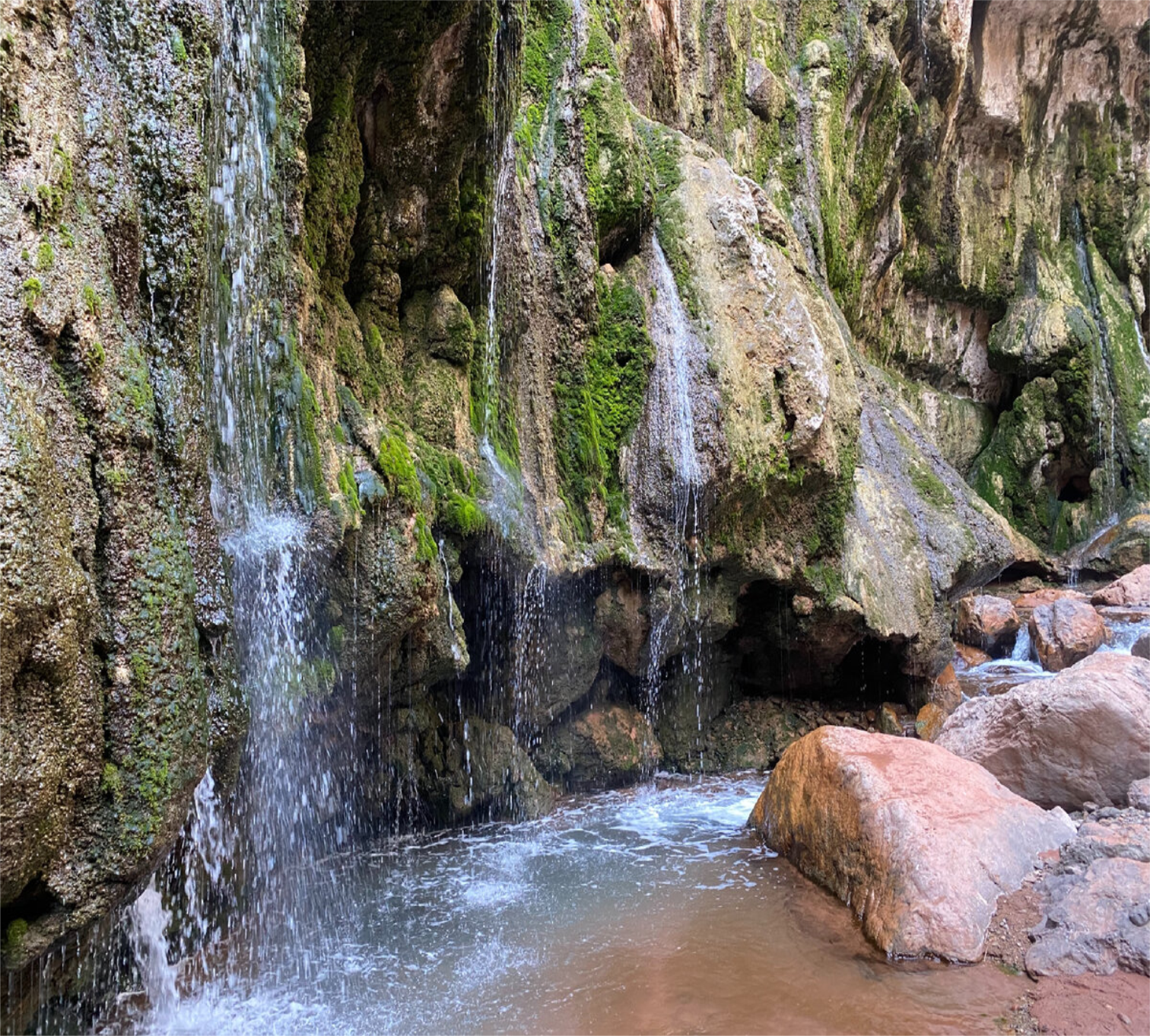
In the Surkhandarya region, there is another unusual place, the Karyshoto Gorges. The gorges have karst waterfalls along their walls despite the fact that they are located in hot and dry areas. As a result, you feel as if you have entered a picturesque oasis. The gorge in several places prevents passage due to the rather high waterfalls. However, when you overcome them, you can see how the gorge continues in two directions.
Canyon Kaptarhona
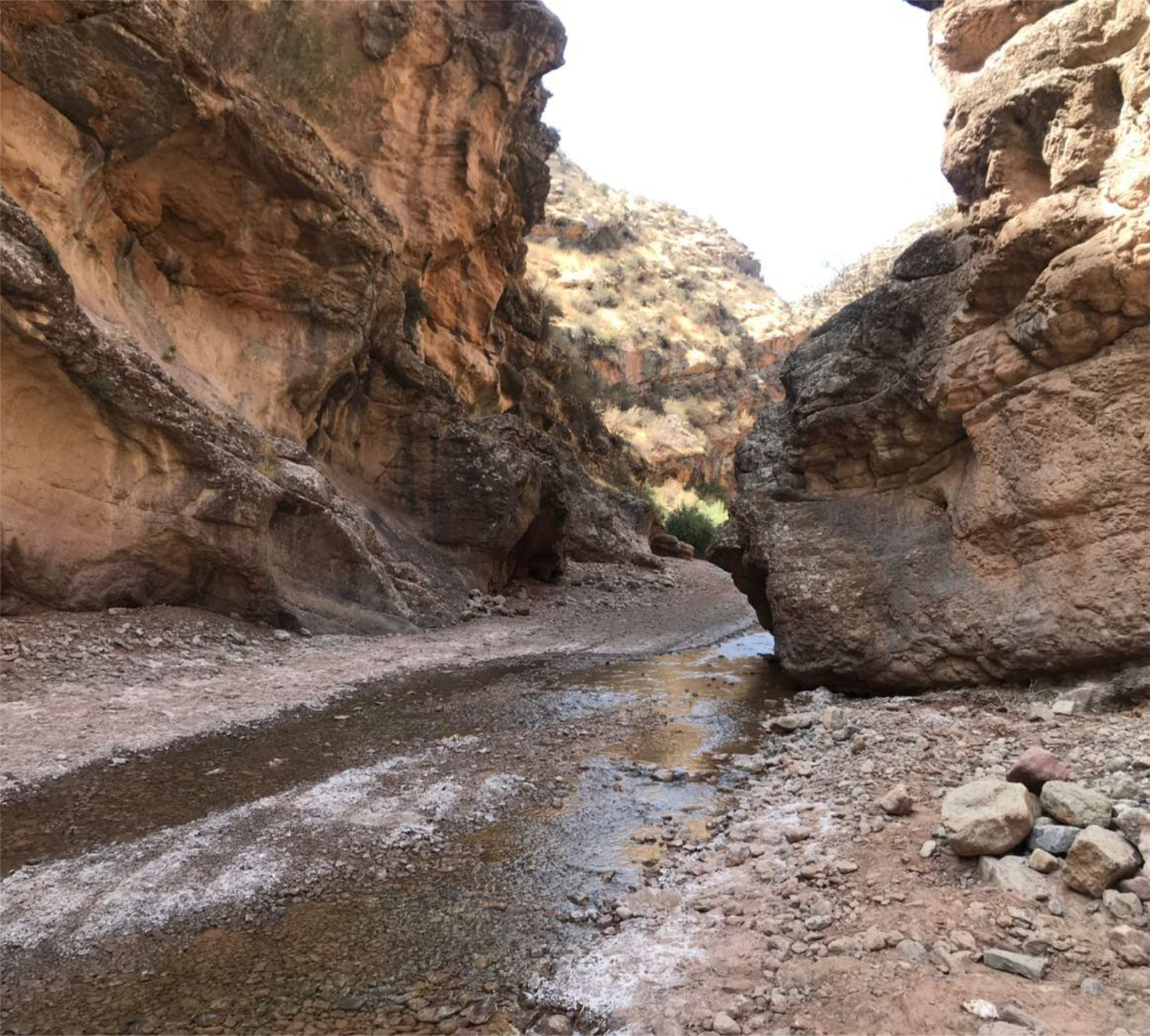
Several thousand doves have been nesting in this canyon for a long time, which is why this place received the name kaptarkhona, which is translated from Uzbek as “dovecote”. Once upon a time, the canyon was completely deserted, and it's only inhabitants were doves, which were so numerous that one could safely call this place the kingdom of these birds. Kaptarhona, is a winding road along a narrow gorge. Various boulders are scattered along the path. Many attractive and exciting turns hide amazing views.
Khojaikon salt cave
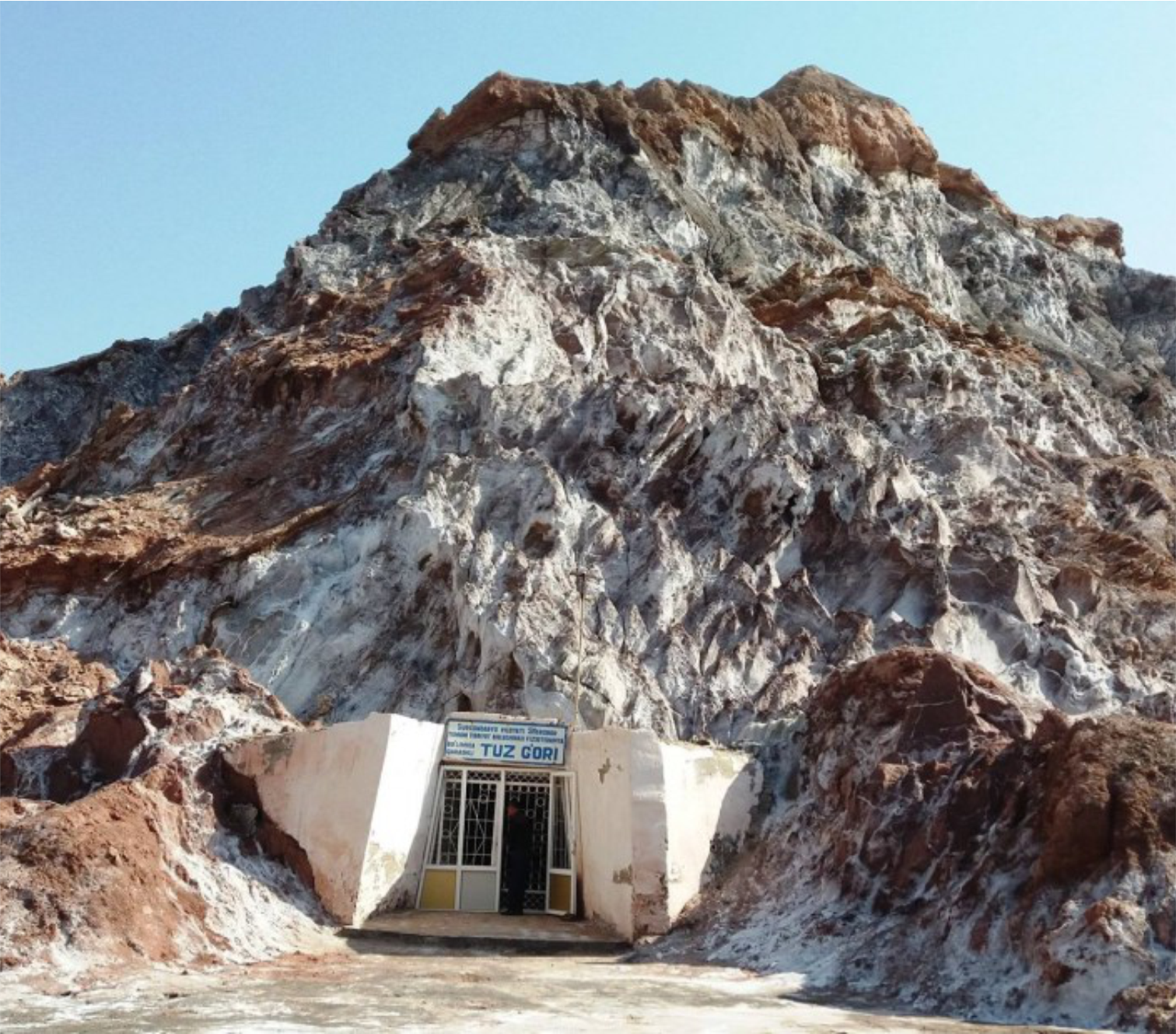
In 1989, the Khojaikon salt cave was opened, which since then, thanks to the concentration of salt and light negative air ions in the air, has helped people cope with various ailments, such as asthma, respiratory diseases, chronic bronchitis, complications of pneumonia, as well as various skin problems. The cave is 155 meters long and is a salt monolith inside of which there are treatment room chambers, each of which differs in temperature, humidity, pressure and trace element content. The healing procedure takes only 2-2.5 hours a day.
Meteor Lake Kanbeshbulak
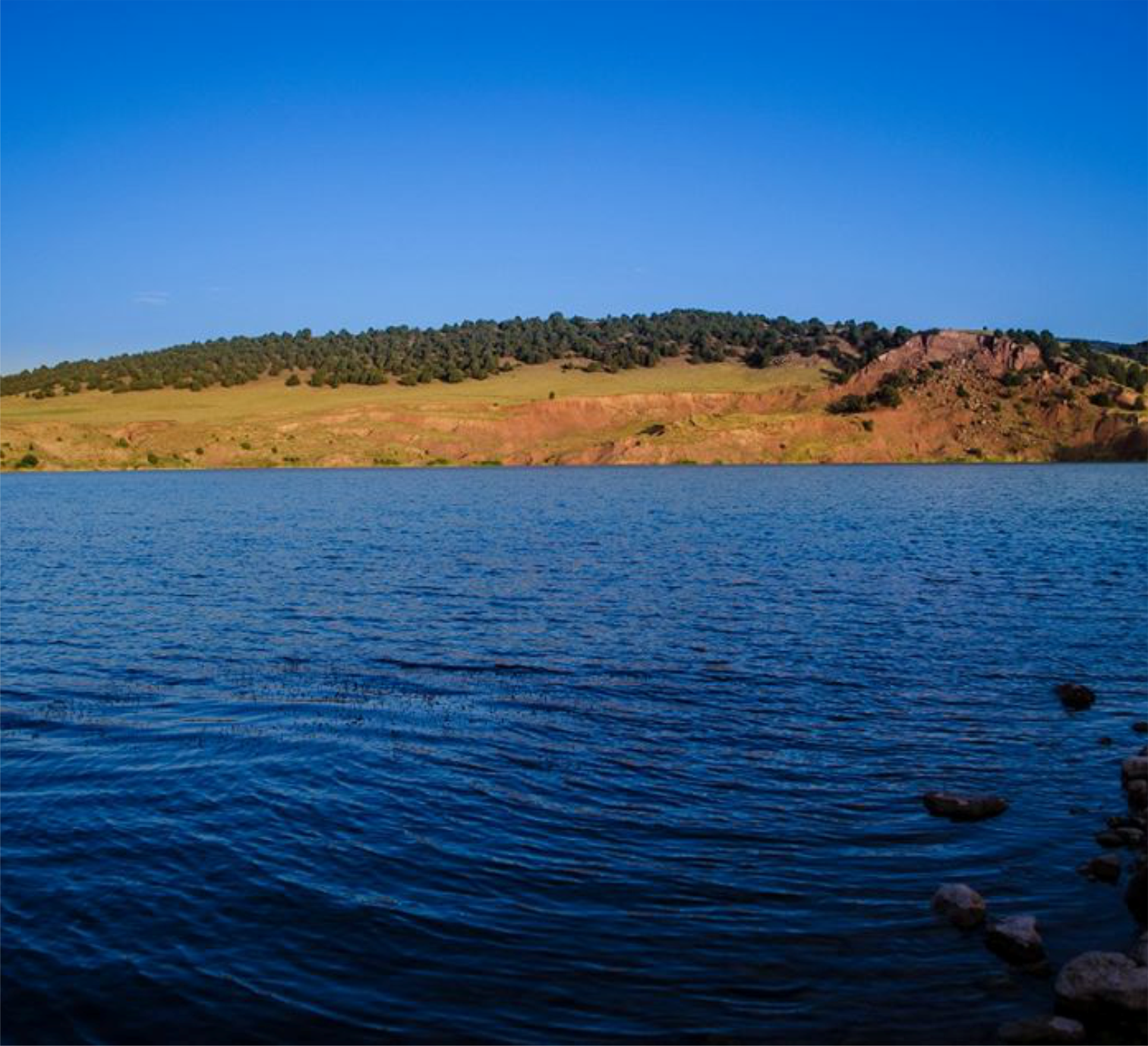
Lake Kanbeshbulak is located in the Khaman tract in the west of Surkhandarya region. The lake is an exceptional natural monument. According to scientists, this lake was formed as a result of a meteorite fall. In their opinion, it was a meteorite crater that filled with water and became known as Kanbeshbulak. The explosive red sandstones that make up the slopes of the lake indicate the origin of the bowl.
Panjob Gorge

The Panjob Gorge is located in the foothills of the Kugitang Tau ridge in the Surkhandarya region of Uzbekistan, 125 km northwest of Termez. This is a very beautiful gorge in which the small river Gazak, in the Karyshoto mountain range, cuts its way through limestone, gypsum and rock salt, creating a powerful picturesque canyon with vertical cliffs more than 200 meters high. In some places the width of the gorges can be no more than two meters. In the narrow passages of the gorge, the most beautiful place is a 30-meter section on the right side of the canyon. In this place, water is knocked out of a rock covered with bright green moss, either as a curtain of water or in separate streams, forming a multiple rainbow under the sun’s rays.
Surkhan State Reserve
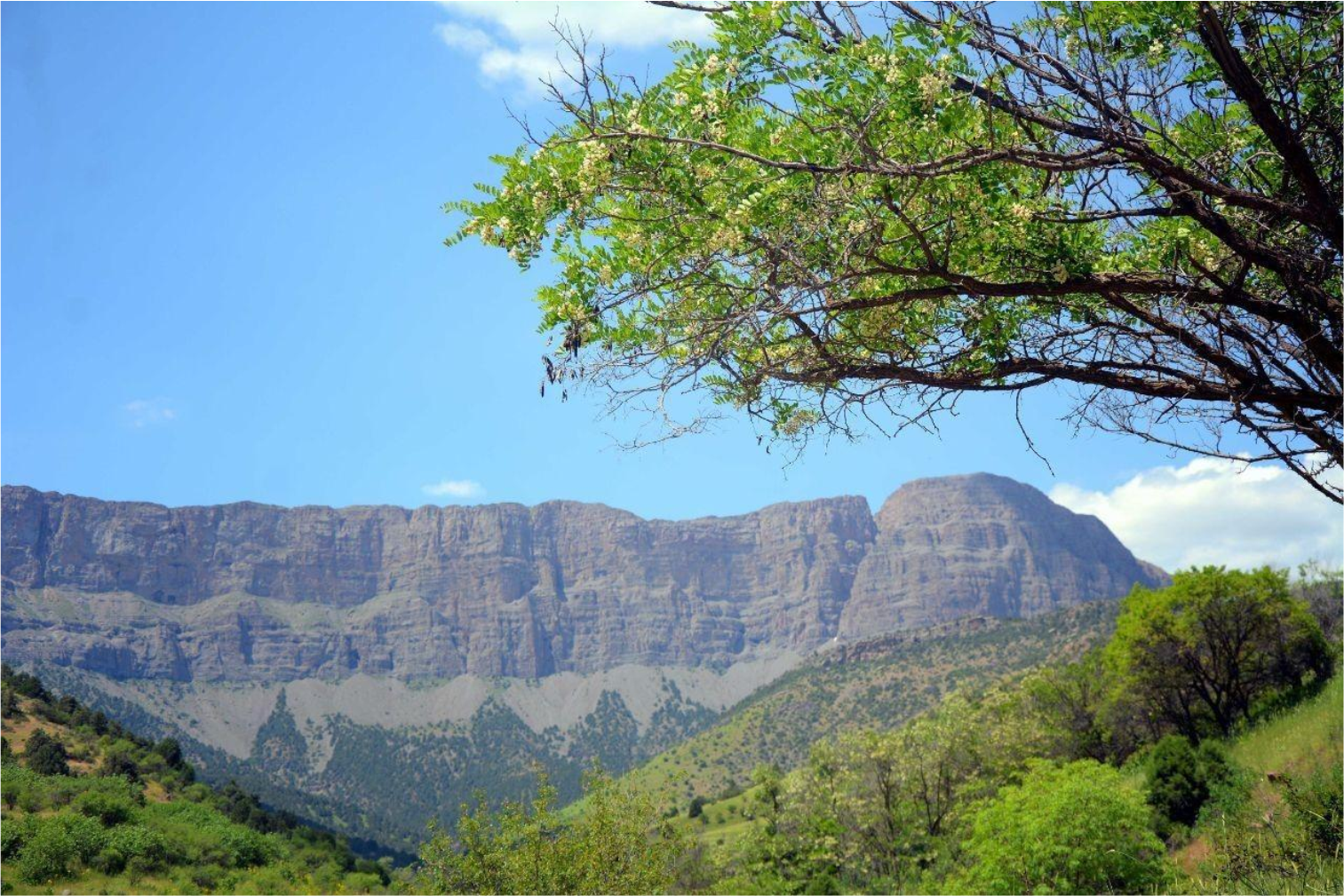
The Surkhan State Nature Reserve is located in the Surkhandarya region of Uzbekistan, just 60 kilometers from the city of Termez. The reserve was created in 1986 by combining the Kugitang and Aral-Paigambar reserves. The purpose of its creation was the preservation and restoration of rare species of plants and animals. The reserve consists of two separate parts, located in the Sherabad and Termez districts of the Surkhandarya region. The reserve occupies 24,554 hectares and is located in the southwestern spurs of the Hissar ridge at an altitude of up to 3,157 meters above sea level. The Surkhan Reserve currently has more than 130 species of birds, as well as more than 25 species of mammals, 27 species of reptiles, as well as 2 species of amphibians and fish.
Kampyrtepa Fortress
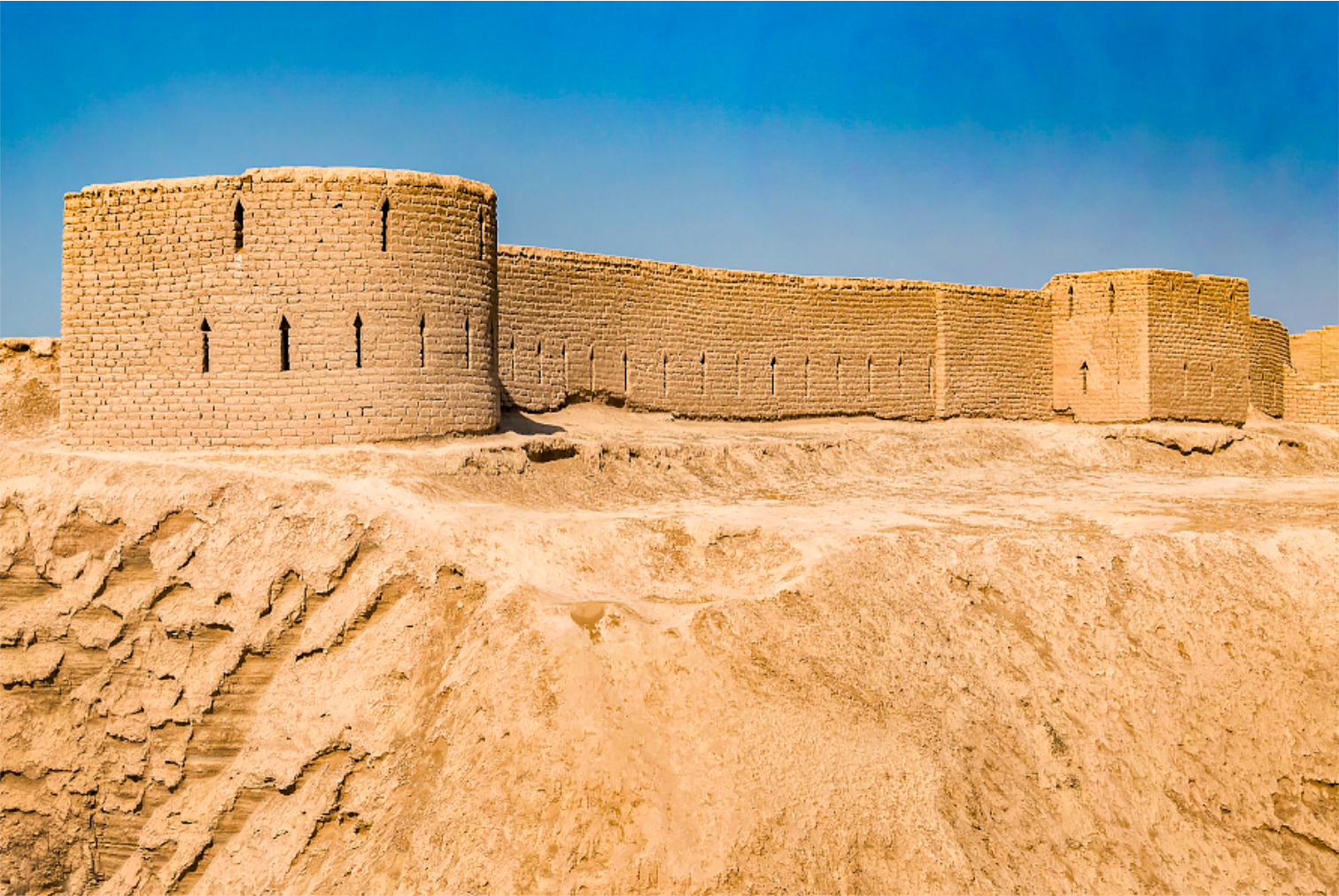
Kampyrtepa is an ancient archaeological site on the territory of Uzbekistan, which is an ancient port city located on the banks of the Amu Darya River (formerly known as the Oxus). It was founded at the end of the 4th century BC and existed until the beginning of the 1st century AD. The main purpose of this settlement was to serve the crossing of the Burdaguy River, as well as to serve as a hotel and customs office. Kampyrtepa served as a transit point for traders traveling along the Silk Road, where they could rest, reload their goods, pray and continue their journey. After decades of excavations and studying written sources, it was decided that the site of Kampyrtepa is the mysterious Alexandria Oxiana, a port city that Alexander the Great built on the Amu Darya.
Topalang Reservoir
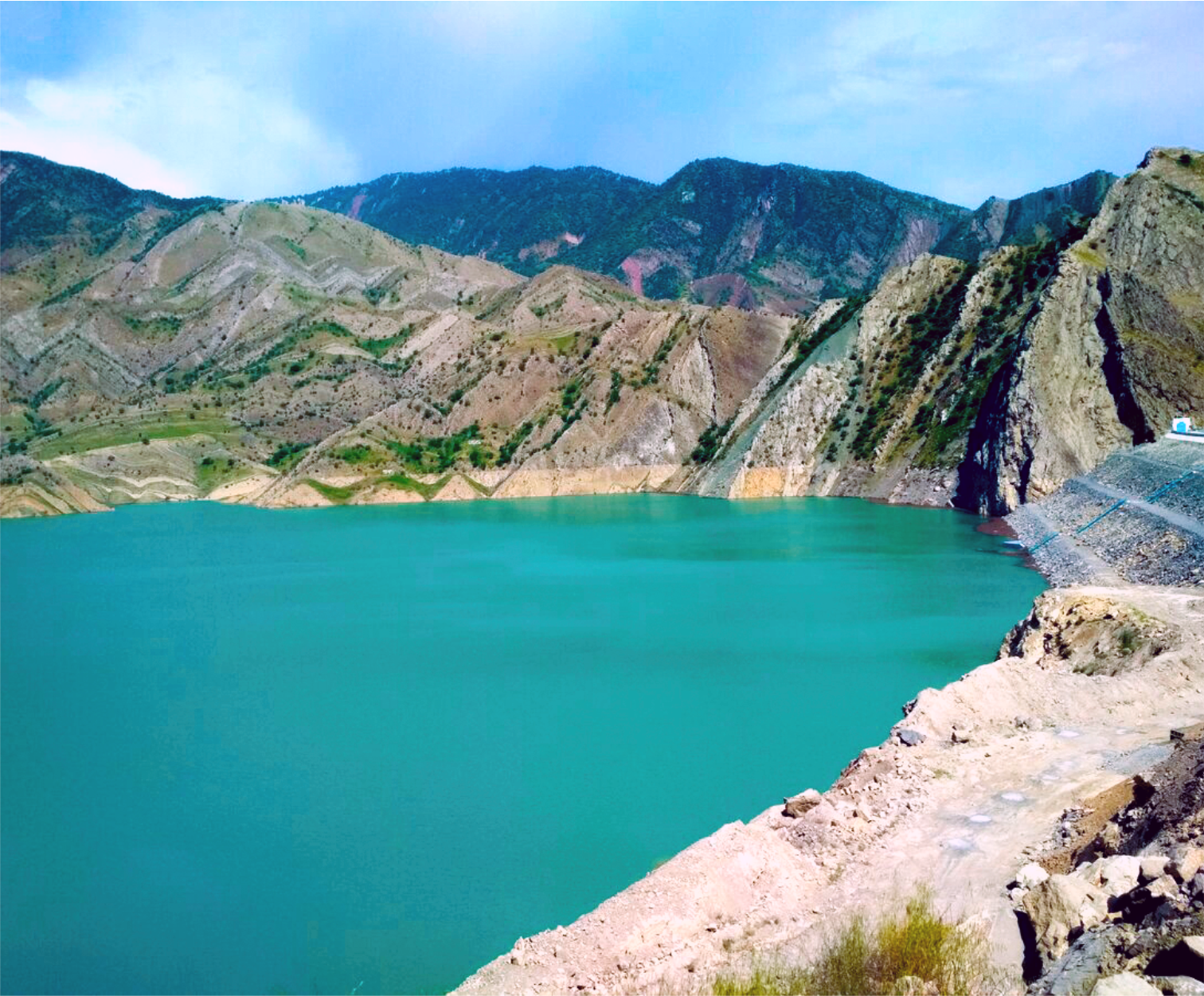
Uzbekistan is famous for the presence of two significant rivers - the Amudarya and the Syr Darya, which flow through its territory and flow into neighboring countries. The Hissar mountain ranges serve as a source for the Topalang River, which originates on the southern slope. It should be noted that the most abundant right tributary of the Surkhandarya has a length of 117 kilometers. The main source of water replenishment in the Topalang River is seasonal snow and glacial water. It is thanks to this that the river supplies water to the Denaus, Shurchin and Kumkurgan districts of the Surkhandarya region.
Sanatorium “Omonkhona” and hospital “Khojaipok”
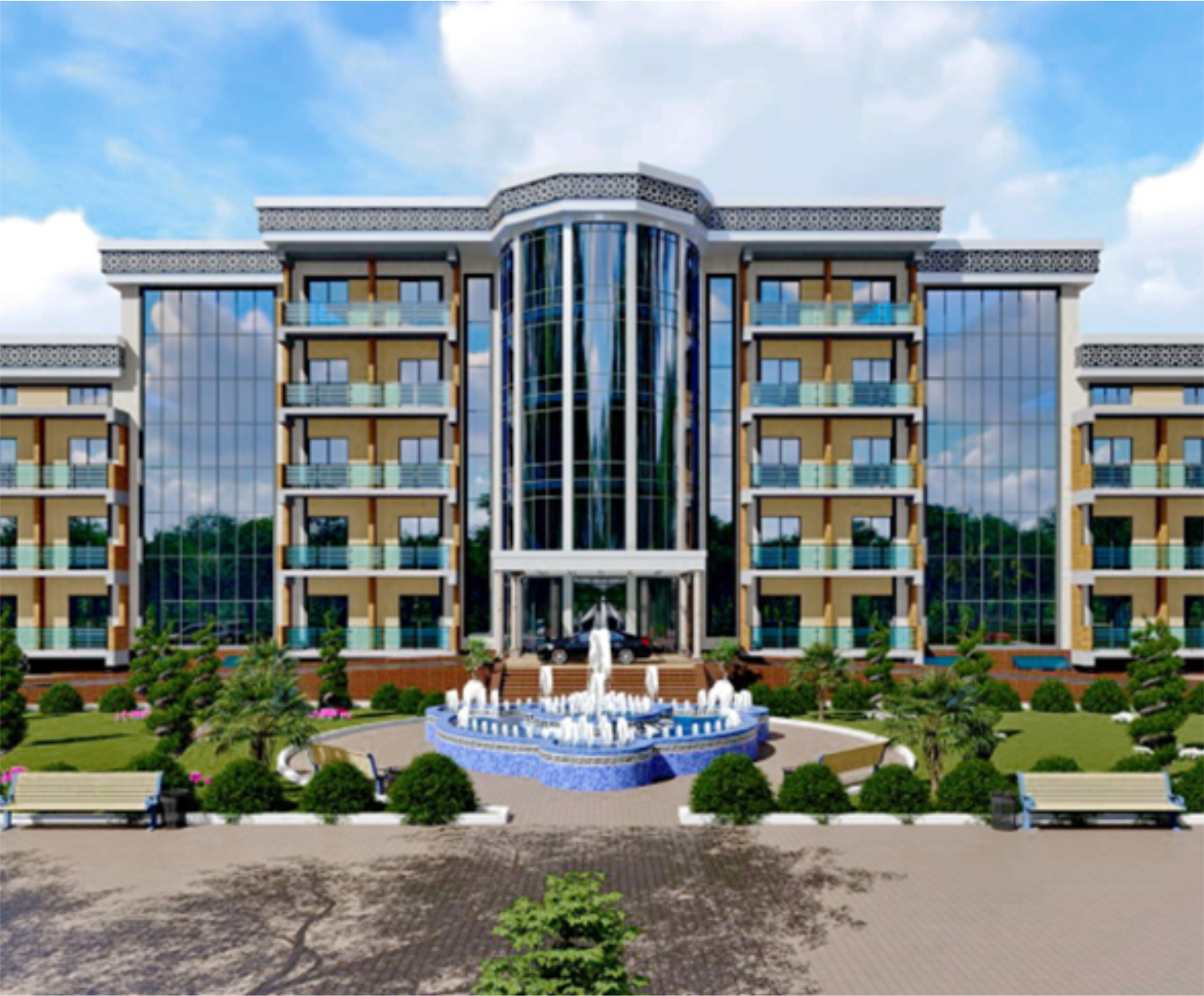
The Omonkhona Balneological Sanatorium, located in the mountains near the city of Baysun, and the Khojaipok Hospital, located at the foot of Mount Kenagi, are the most famous health complexes in the Surkhandarya region. The thermal water in the Omonkhona sanatorium has healing properties and is part of the health programs of the sanatorium. Using magnetic therapy, laser therapy, acupuncture, water procedures, massages, liver cirrhosis, hepatitis and other diseases are treated.
Khojaipok Hospital specializes in the treatment of various diseases, including gynecological problems, cardiovascular disorders, general therapy and neurological disorders. To achieve a positive result, various methods are used, such as hydrotherapy (including mineral baths and circular showers), heat therapy, mud therapy, physiotherapy, electrotherapy and ozone therapy.
Upon completion of the procedures, visitors can visit the natural beauty, swim in the resort's pool, play tennis or engage in other outdoor activities in the sports club.
Hissar Mountains
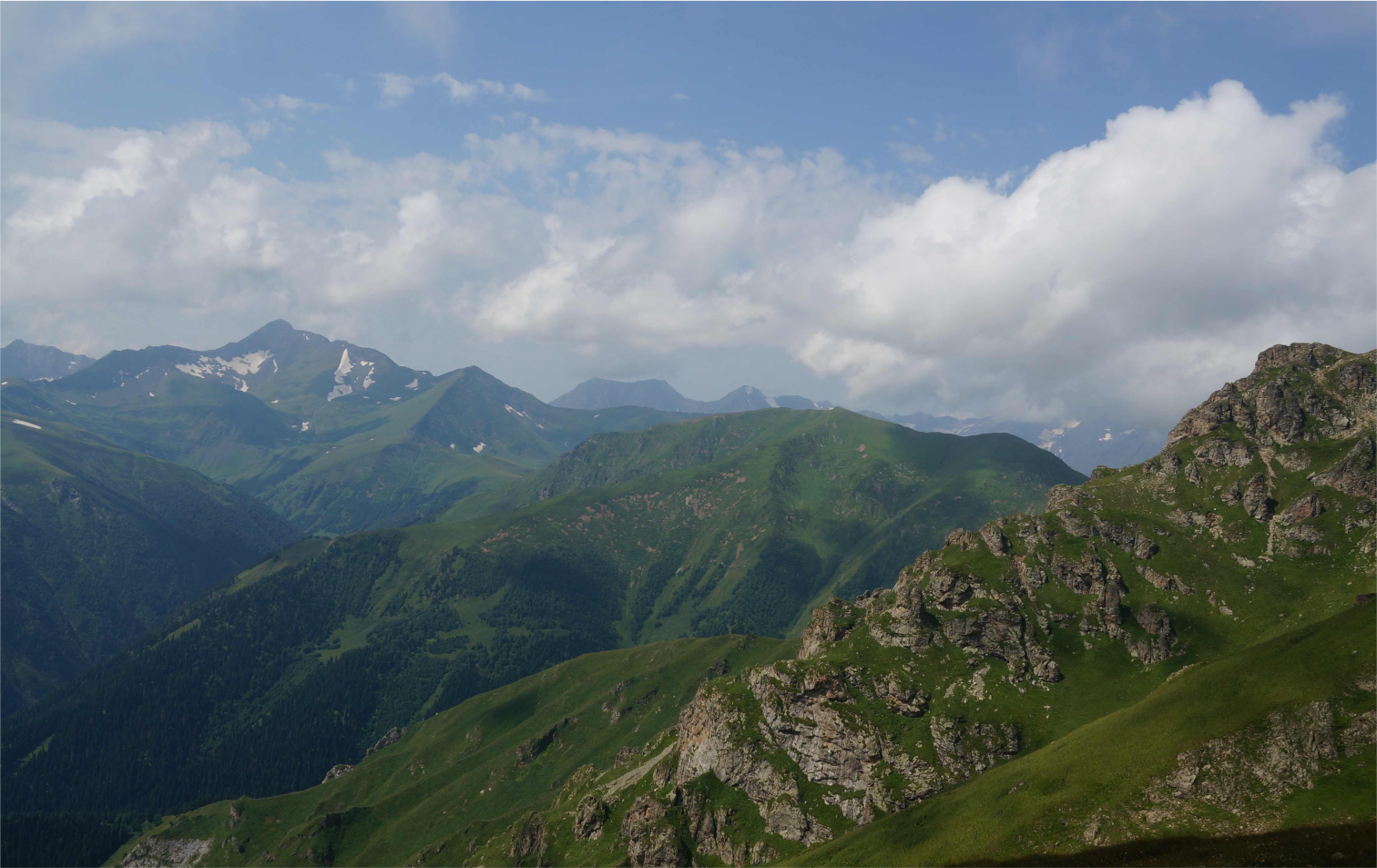
The Hissar Mountains are a mountain range that stretches 200 kilometers from east to west across the Hissar region of Tajikistan. It is the western part of the Pamir-Alai system. The highest point in Uzbekistan, Khazret-Sultan, is 4643 meters, located on the border of Uzbekistan and Tajikistan. The ridge is a place of unique geological outcrops in Eurasia. The structure consists of sandstones and crystalline rocks interspersed with granite intrusions. In addition, all ecosystems and climates of the Pamir-Alai are represented here. At the highest places there are glaciers and rocky wastelands. A famous natural attraction of the Hissar Ridge, located in the southern part of the mountains, is the cave of Amir Temur. This natural formation, stretching for 860 meters, is considered the largest underground lake in Uzbekistan. It is important to note that the cave was inhabited back in the Greco-Bactrian period (IV-III centuries BC).
Archaeological Museum of Termez
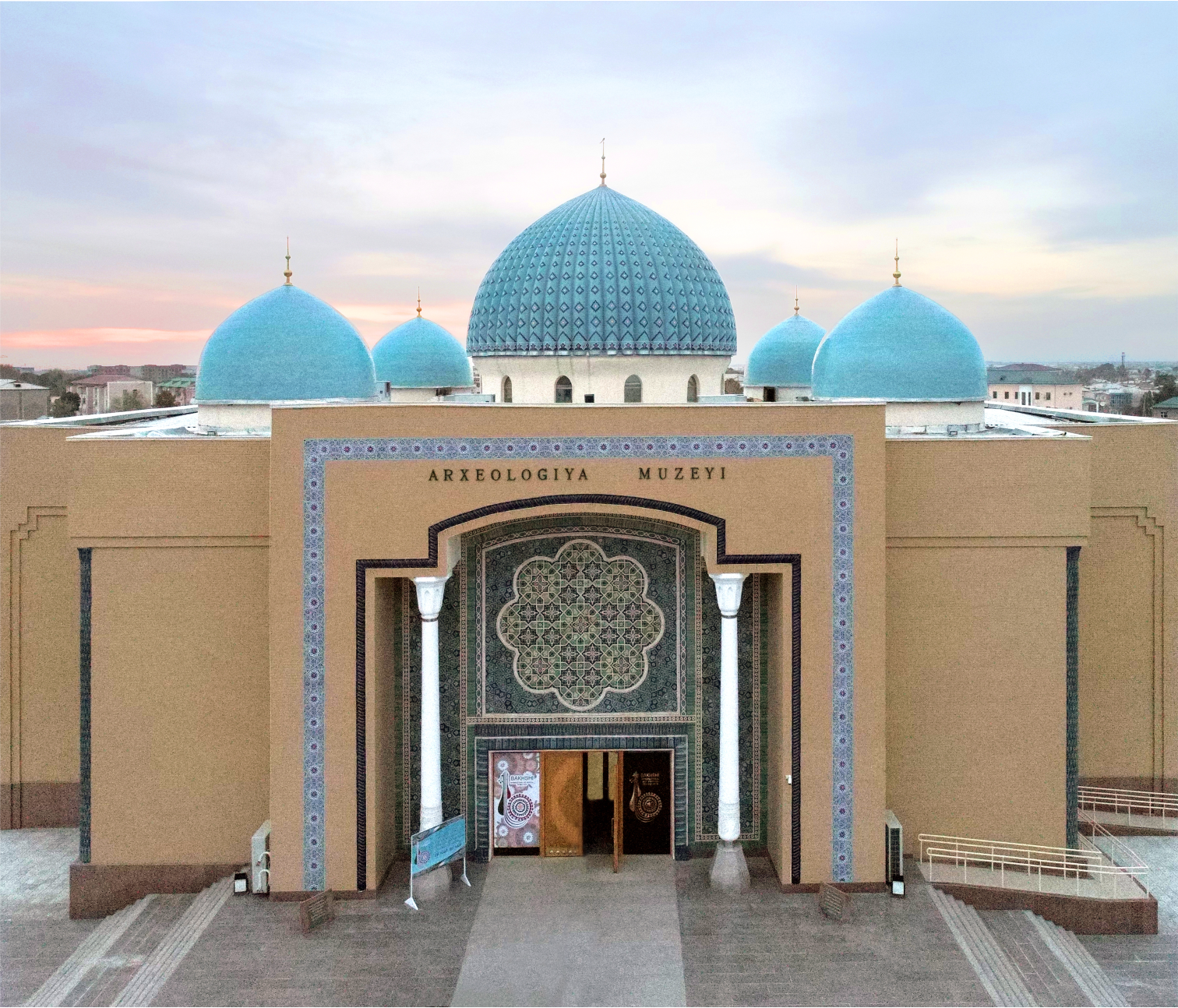
To celebrate the 2500th anniversary of the city of Termez in 2002, the Termez Archaeological Museum was built and opened. Today it is the only archaeological museum in Central Asia, and many of its unique exhibits date back more than 100 thousand years BC. These include 624 museum relics of global significance, displayed using the latest information and communication technologies.
Karatepa complex
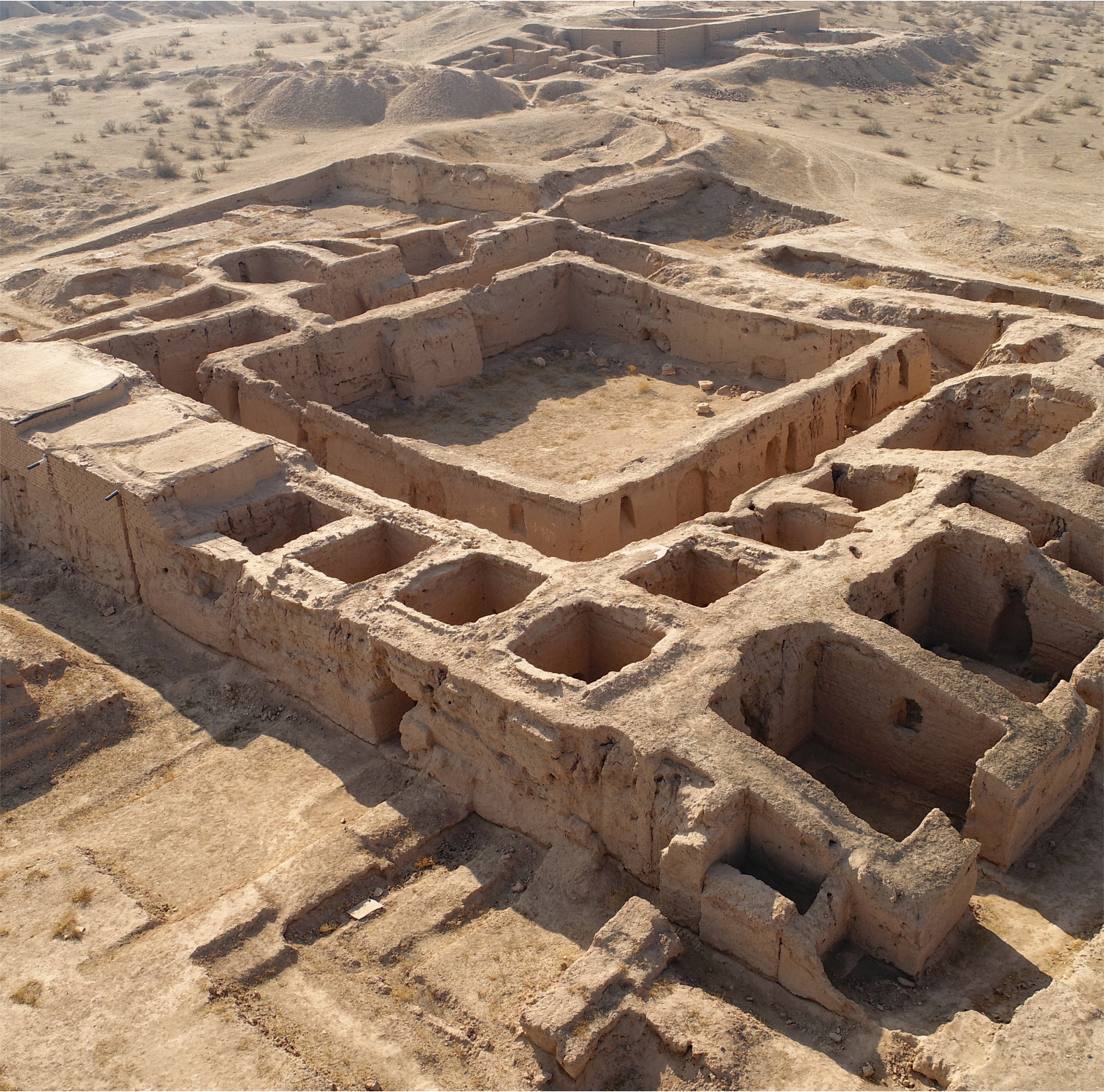
Located in the northwestern part of old Termez, Karatepa is a place of worship associated with Buddhism. On the three hills of this place there are various temples and monasteries that were built in the 2nd century AD. The architecture of Karatepa is remarkable for its unique combination of caves carved into sandstone and buildings made of pakhsa and adobe.
Zurmala Stupa
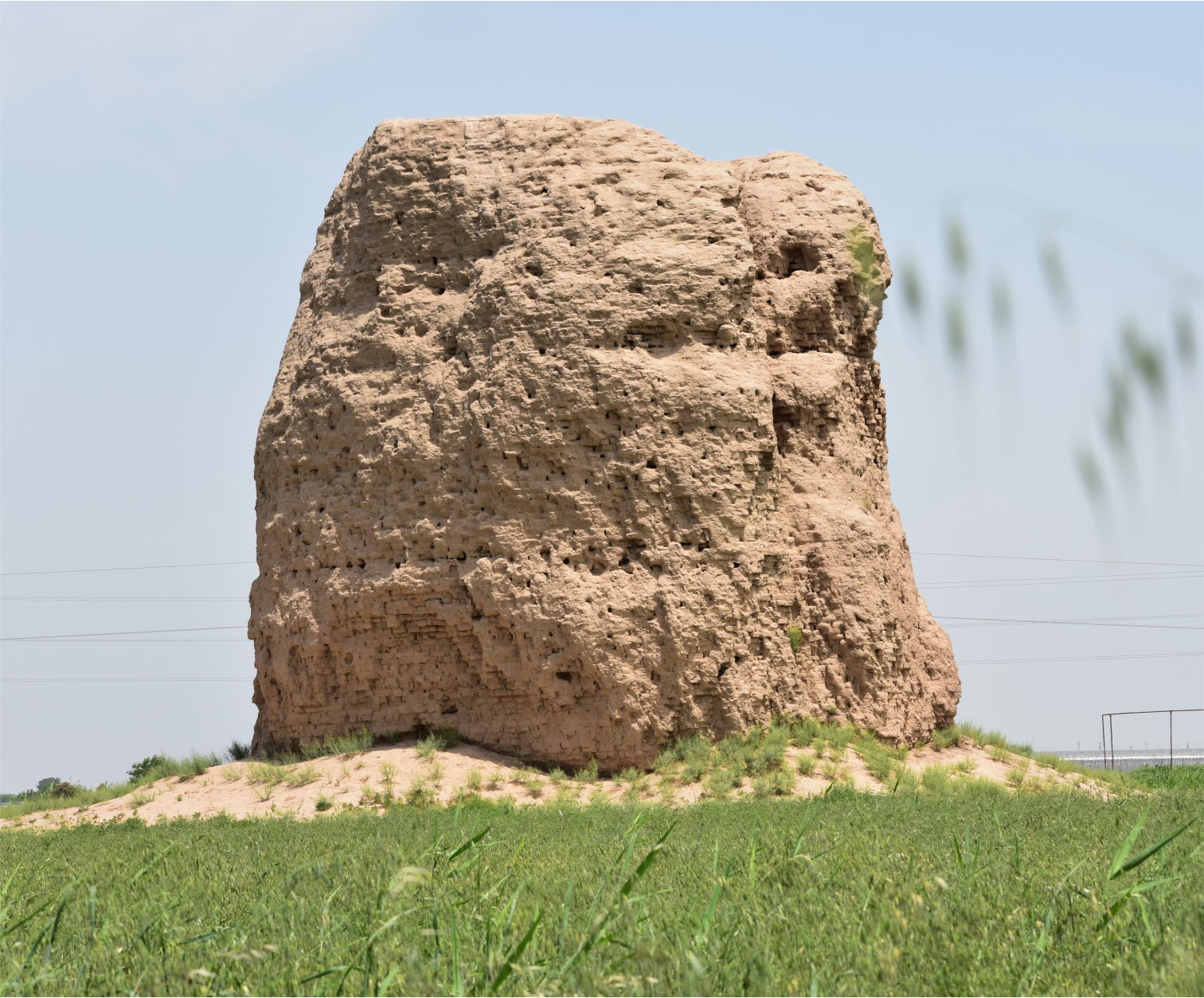
Northeast of the ruins of the ancient settlement of Termez is Zurmala, a 12-meter-tall Buddhist stupa. It was built during the Kushan period, around the 1st and 2nd centuries AD, while Buddhism was spreading in Central Asia. The modern city of Termez is located 10 kilometers west of the ancient settlement of Termez. On its outskirts one can see the remains of entire complexes of ancient Buddhist buildings, which in the Middle Ages covered agricultural fields. Over time, the Buddhist stupa turned into a clay mound, which was difficult to recognize as a ritual structure.
Mausoleum of Al-Hakim At-Tirmizi
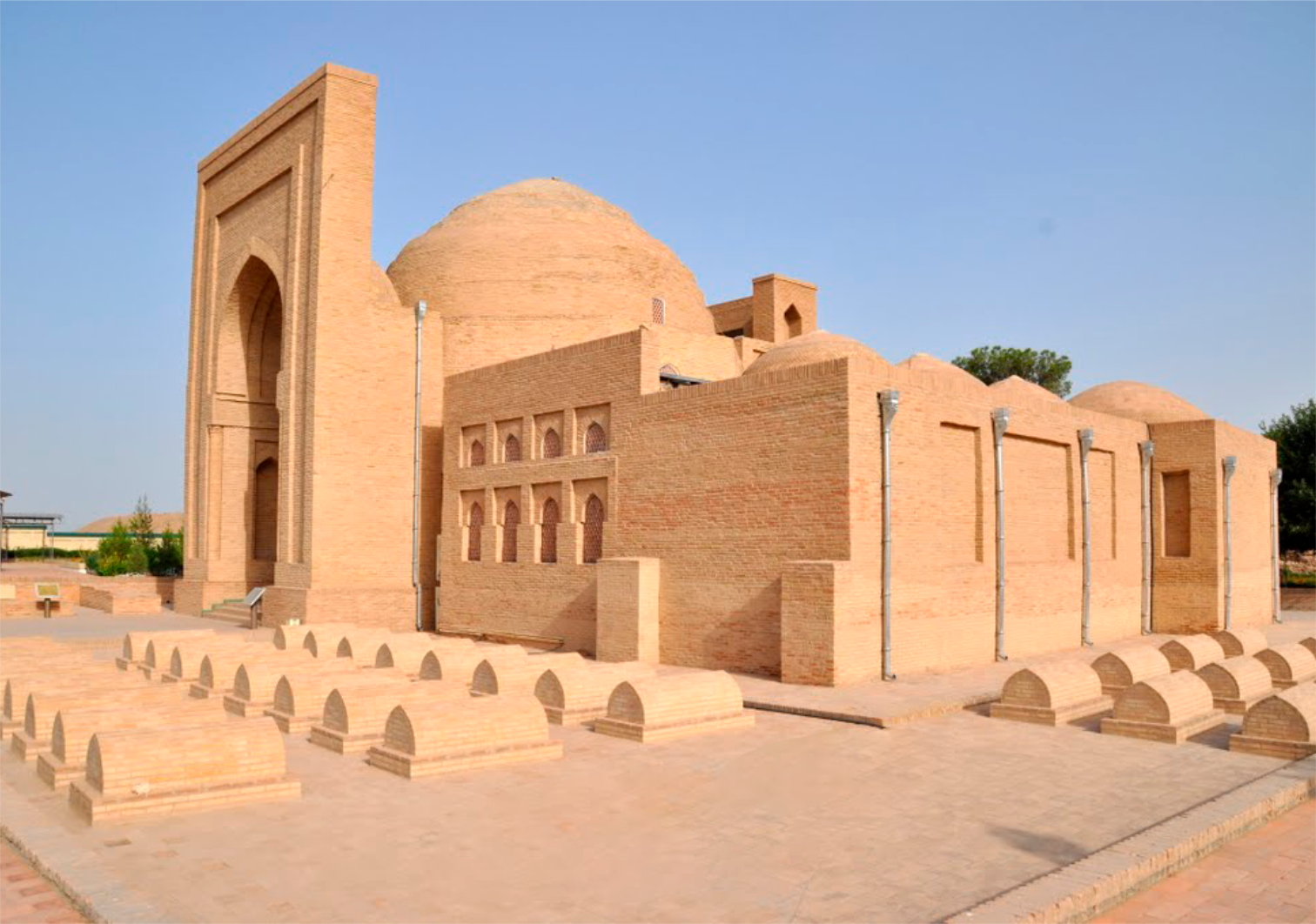
Al-Hakim At-Tirmizi is a sacred place of worship for Muslims and an architectural monument. The mausoleum is one of the holy places of the Surkhandarya regional center. The architectural monument is located approximately 60 kilometers from the current center, northwest of old Termez. Abu Abdulloh ibn Hassan ibn Bashir Al-Hakim At-Tirmizi is an outstanding Islamic figure, author of various philosophical and religious works and founder of the order of Dervishes. About 80 works were written by the eminent At-Tirmizi who received the name Al-Hakim, which means the wise one, due to his deep knowledge and broad vision.
Mausoleum of Ak-Astana-baba
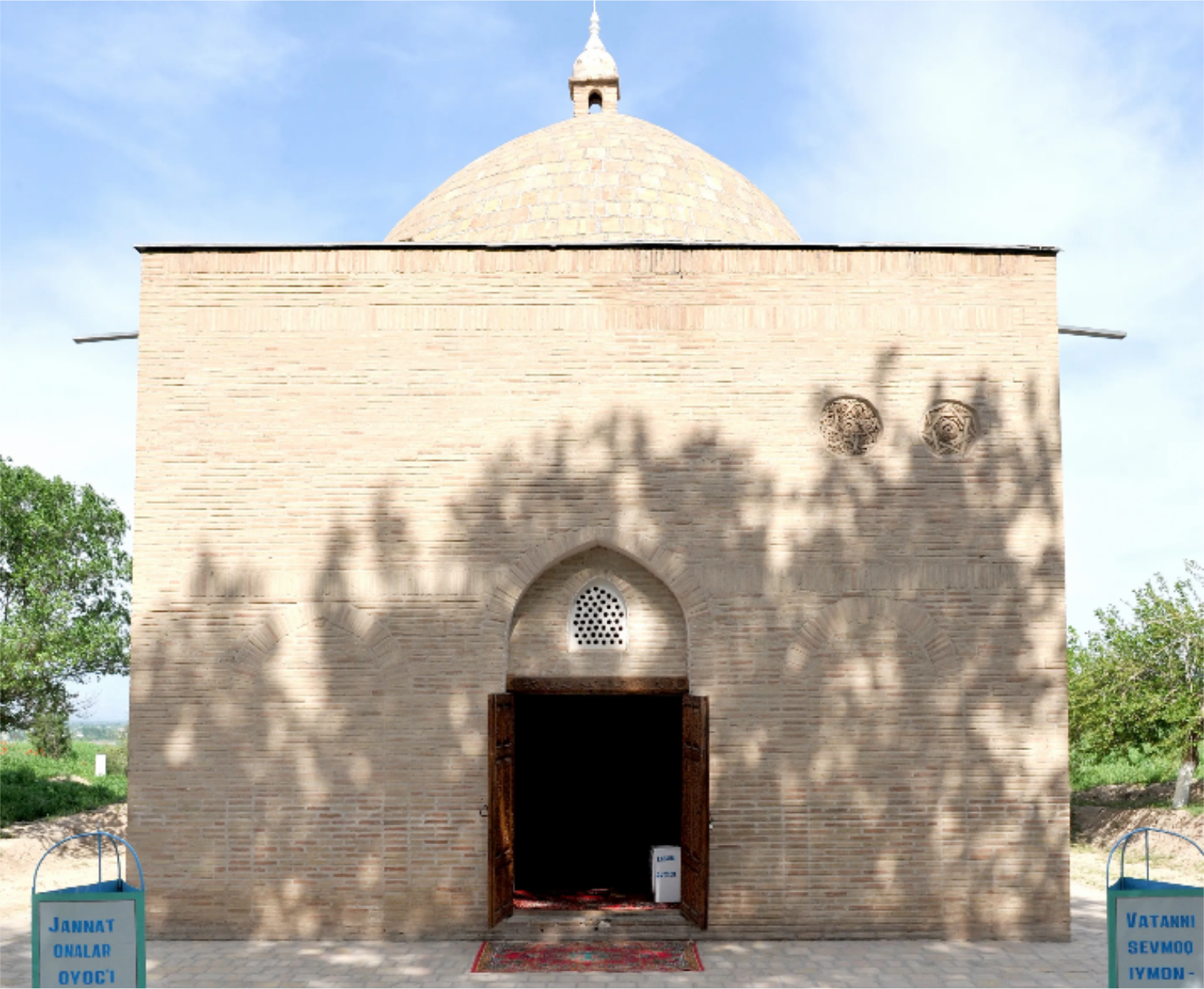
In the village of Telpek-Chinar, Sariasi district, Surkhandarya region, there is the Mausoleum of Ak-Astana-baba. Scientists believe that the mausoleum was built on the grave of the companion of the Prophet Muhammad (SAW), Saint Abu Hurair. The mausoleum has four rooms called “Chorsi Khona”, in which bricks are laid in batches, and the north-eastern part of the complex can be accessed through the roof. At the entrance to the mausoleum, there are two complex signs, about half a meter in diameter. It is still not possible to correctly interpret the semantics of these signs.
Kirk Kiz Fortress
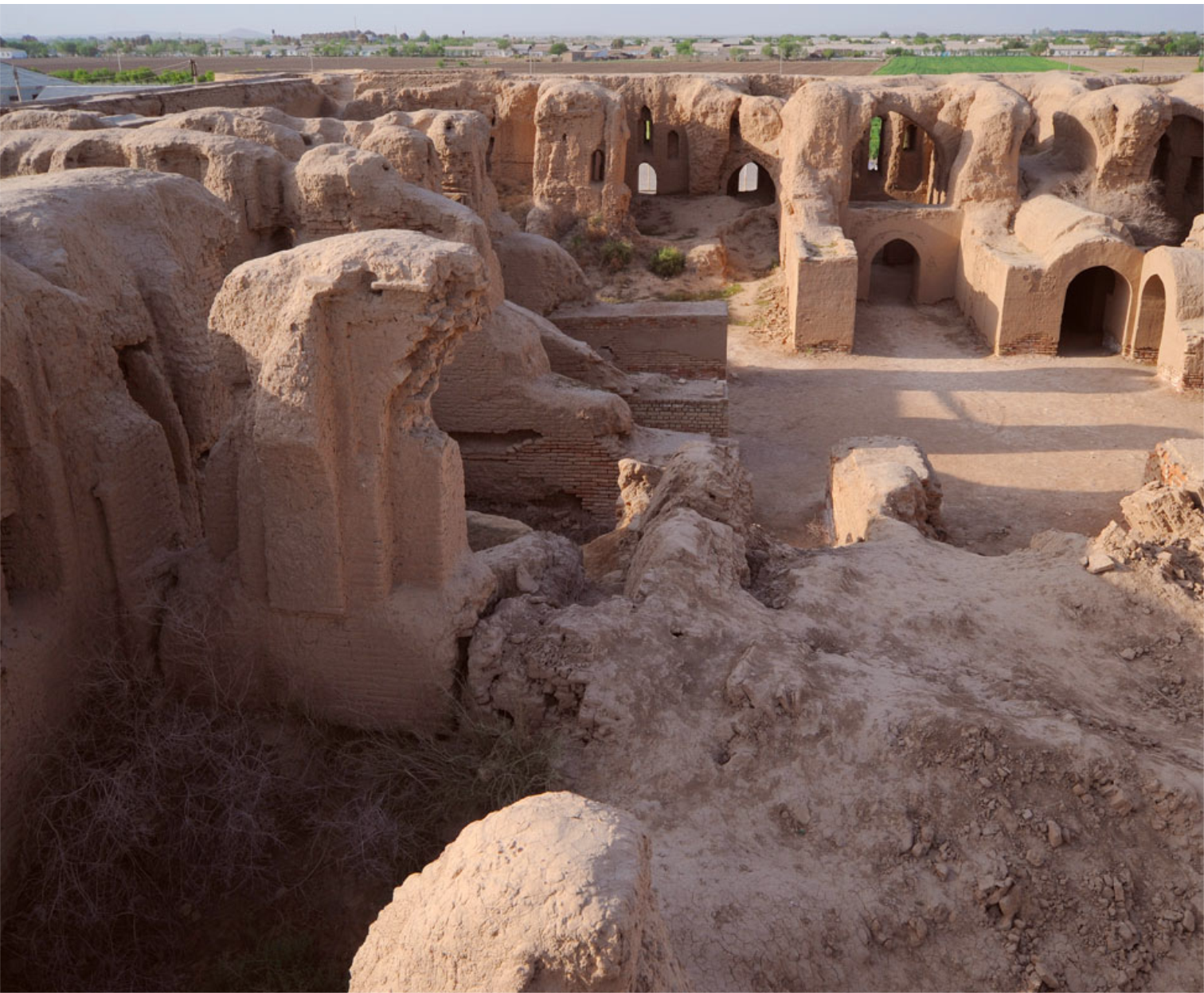
One of the most interesting ancient places is the Kirk Kiz fortress. Although the fortress is almost completely destroyed at present, even the ruins allow us see the former size of the structure and marvel at the skill of the ancient architects. The symmetry of Kirk Kiz makes it unique; each archway and corridor have a counterpart located on the opposite side. Two passages cross the building crosswise and divide it into four equal parts. There are versions that it was a country aristocratic palace, a women's madrasah, a khanaka or a caravanserai.
Dzharkurgan minaret
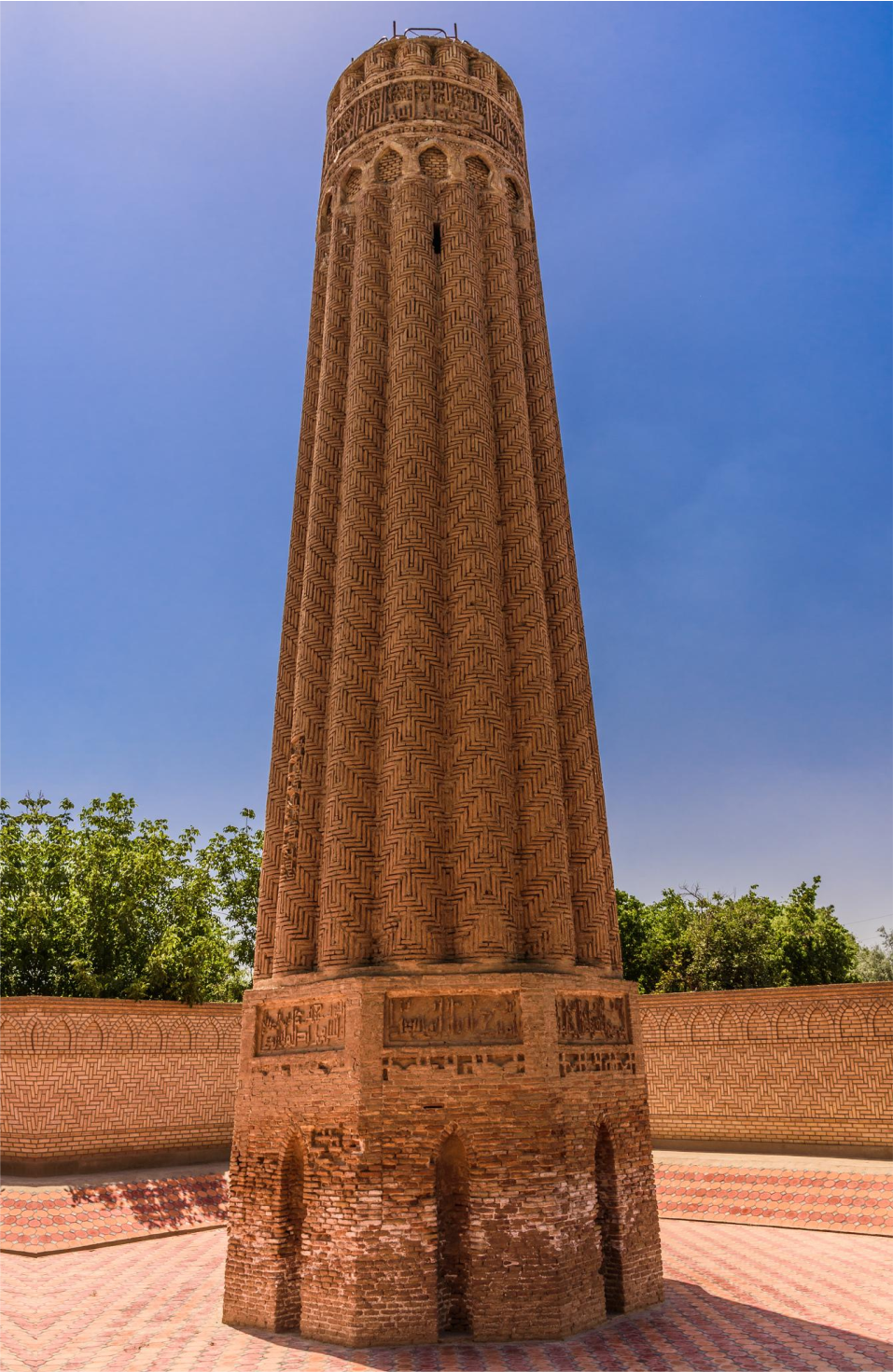
The minaret is located 5 kilometers from the city of Jarkurgan and 40 kilometers from Termez, near the village of Minor. Thanks to the deciphered inscription on the building, it was established that this architectural monument dates back to the 12th century. The inscription states that construction took place from 1108 to 1109 AD, but some scholars believe the date reads differently and construction was completed in 1110. This building is unique with its decorative elements. At that time, mosaics were often used to decorate minarets; in the case of this minaret, we see vertical decorative corrugations that were made using a specially baked brick masonry, which was cut in a herringbone pattern from top to bottom.
Dalverzintepe settlement
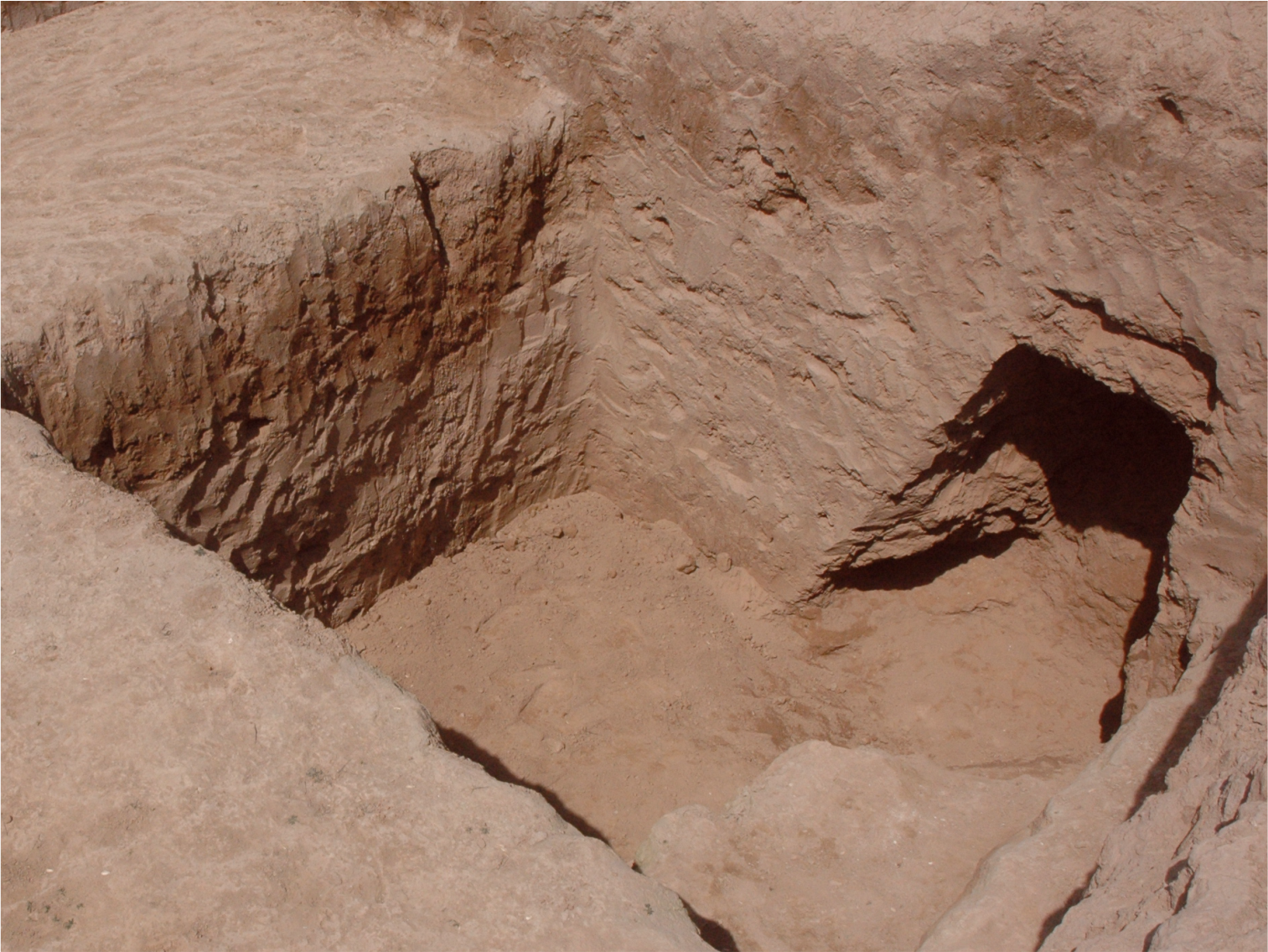
Dalverzintepe, the main city of the powerful Kushan Empire, has so far been the subject of careful study by many historians and archaeologists. With its secrets and many valuable objects found, the site attracts attention. The largest treasure in history was found here; about 36 kilograms of gold were discovered in this place in 1972. Archaeological excavations have revealed a lot of new things about the architecture, culture and fortifications of Northern Bactria. Finds such as sculptures, paintings and figurines show the high level of culture of the people of the Kushan era. According to many researchers, Dalverzintepe is considered the most ancient Buddhist building.
Ensemble Sultan-Saodat
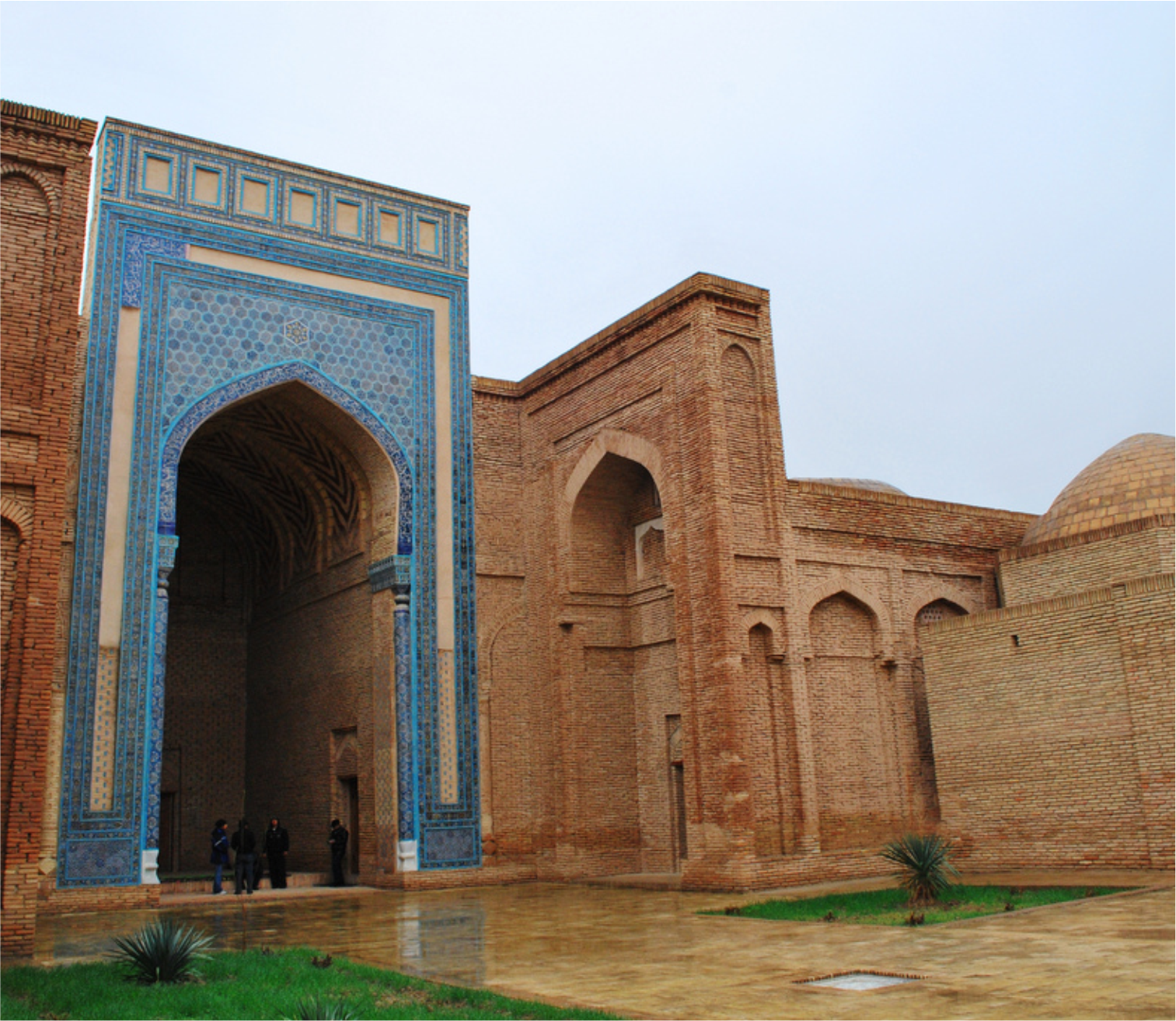
On the outskirts of the city of Termez in the center of the Surkhandarya region of Uzbekistan there is the architectural ensemble of Sultan-Saodat. The memorial complex consists of tombs of the Termez Seyyids, who were considered direct descendants of the Prophet Muhammad. The complex contains various memorial and religious buildings built from the 11th to the 17th centuries. All buildings have a common architectural concept despite the fact that they were built at different times.
Hanaka Kukildor-ota
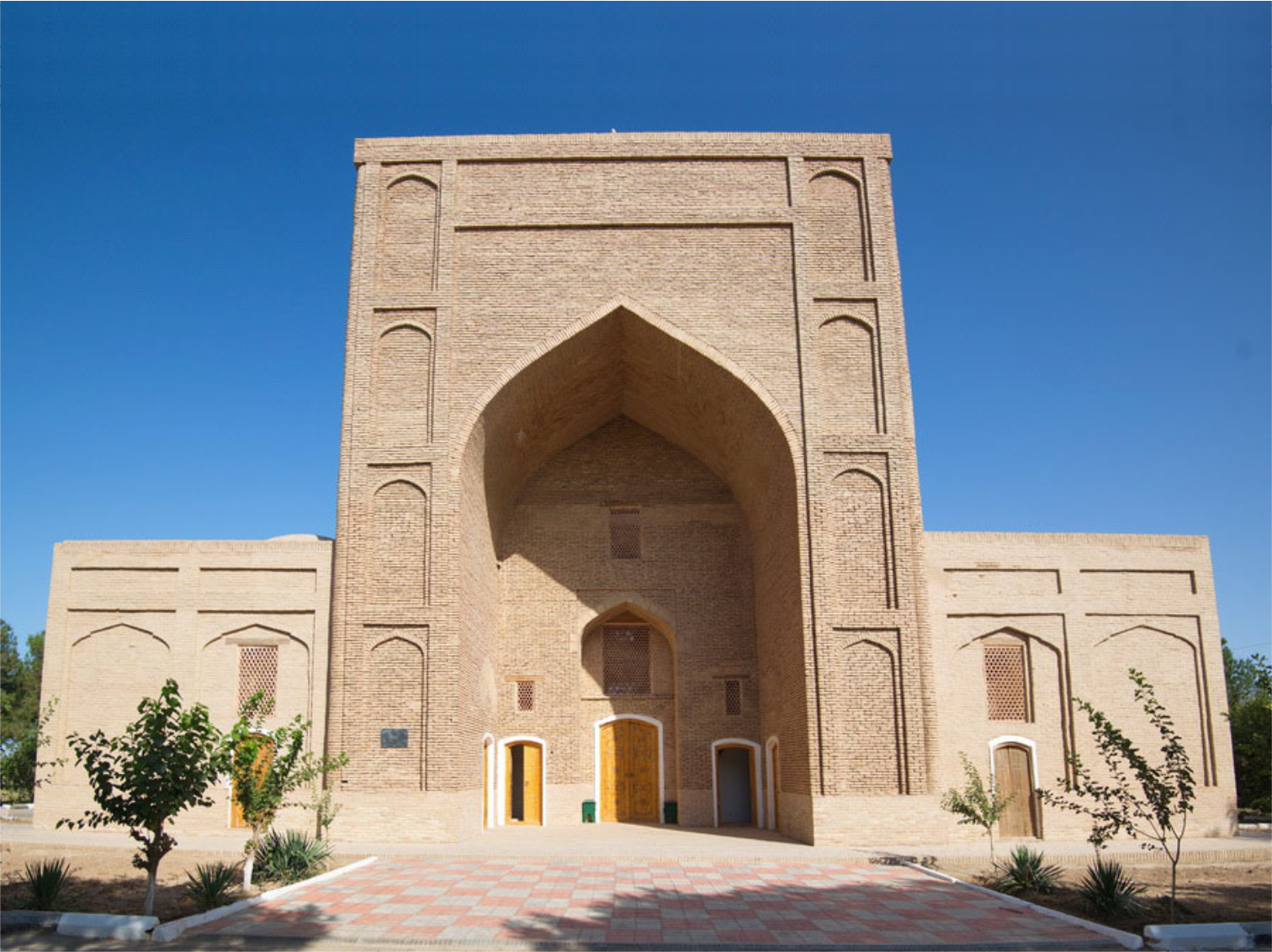
Khanaka Kukildor-ota in Termez is a holy monastery that has become one of the most revered among Muslims. Khanaka Kukildor-ota was built in the mid-1100s. It stands out among other monasteries due to its unique architecture, history and significance in the Muslim world. The building contains numerous tombstones, as well as the burial place of the Muslim Saint Kukildor-ota. This prominent religious figure was known for his great righteousness. The monastery was built in memory of him. After the restoration of the Khanaka, Kukildor-ota acquired a unique appearance, which is characteristic of all architectural monuments of the Timurid era.
Fayaztepa complex

Fayaztepa is located at a distance of 4 kilometers from modern Termez, Surkhandarya region. The monastery complex consists of 13 rooms and an inner courtyard with an ivan where a refectory was attached to the monastery on the left side. In some places of the complex there are cooking fires, as well as skulls with inscriptions in Bactrian and other ancient languages. Coins of Heliocles (the Greco-Bactrian king) and Kanishki (the ruler of the Kushan Empire) were also found there. According to archaeological excavations, monks used to live in the monastery, and they also provided housing for pilgrims. In the IV century, Fayaztepa was captured by the Sassanid army (the dynasty of Persian rulers), due to which the complex stopped functioning. Previously, the complex was called Khaya-Vihara, which translates as "the monastery of horsemen", the current name of the complex was given in honor of the director of the Surkhandarya Museum of Local Lore R.F.Fayazov, who participated in the excavations of the Buddha complex.
Neighborhoods of Derbent
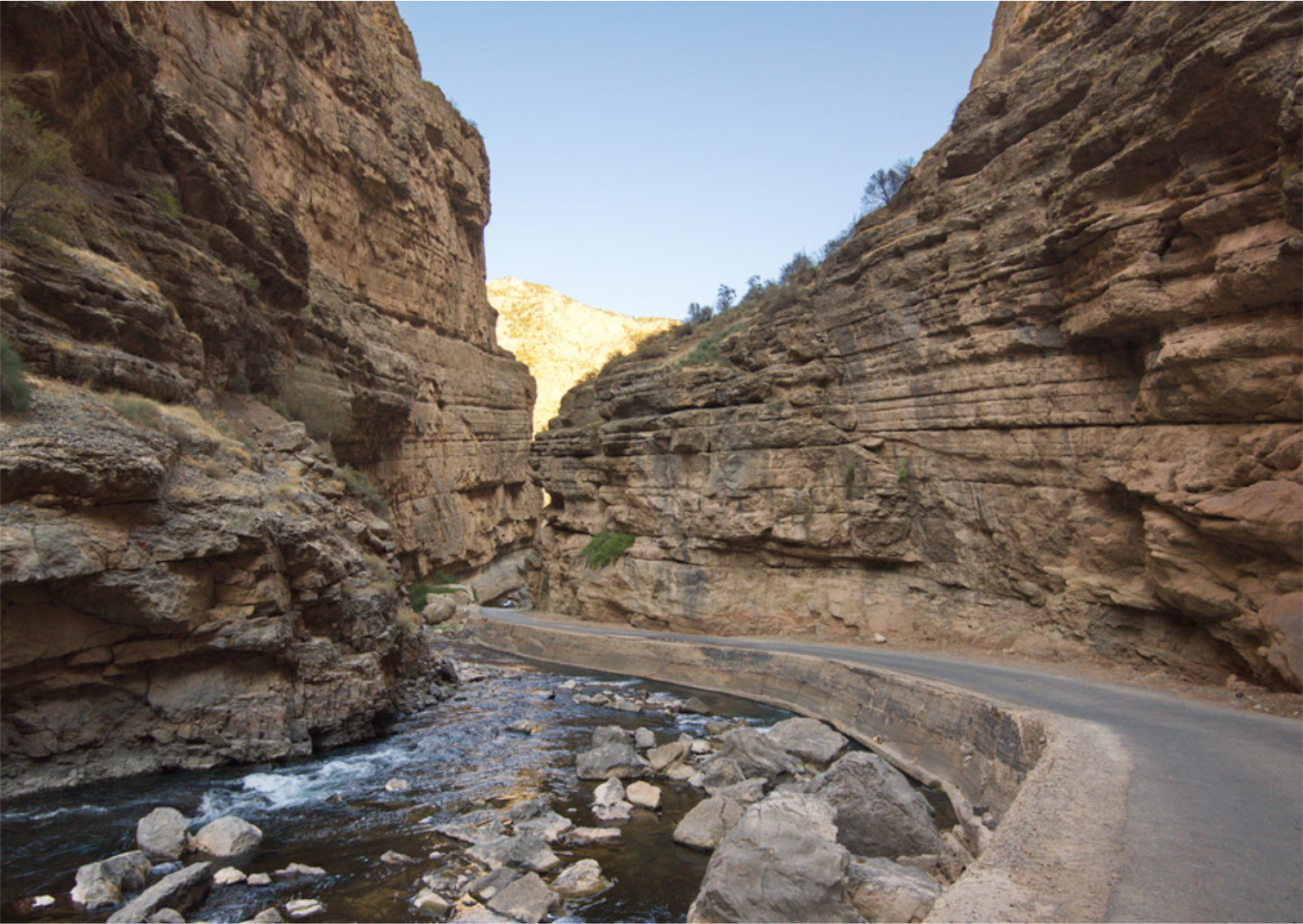
The Derbent mountain village is located on an important trade route along the Sherabad River, connecting the southern regions of modern Uzbekistan, Northern Afghanistan and Tajikistan with the central cities of Samarkand, Bukhara and Tashkent, which were known at the time as Shash. The land around Derbent looks heavily damaged - high rocks either form a majestic gate, or almost merge overhead, reminding us of the bloodshed here while defending the borders of different empires. Also, travelers can expect places that surprise with their power, strength and pristine beauty. Here you will find gorges including the famous Iron Gate, which was besieged by Alexander the Great.
The Church of Alexander Nevsky
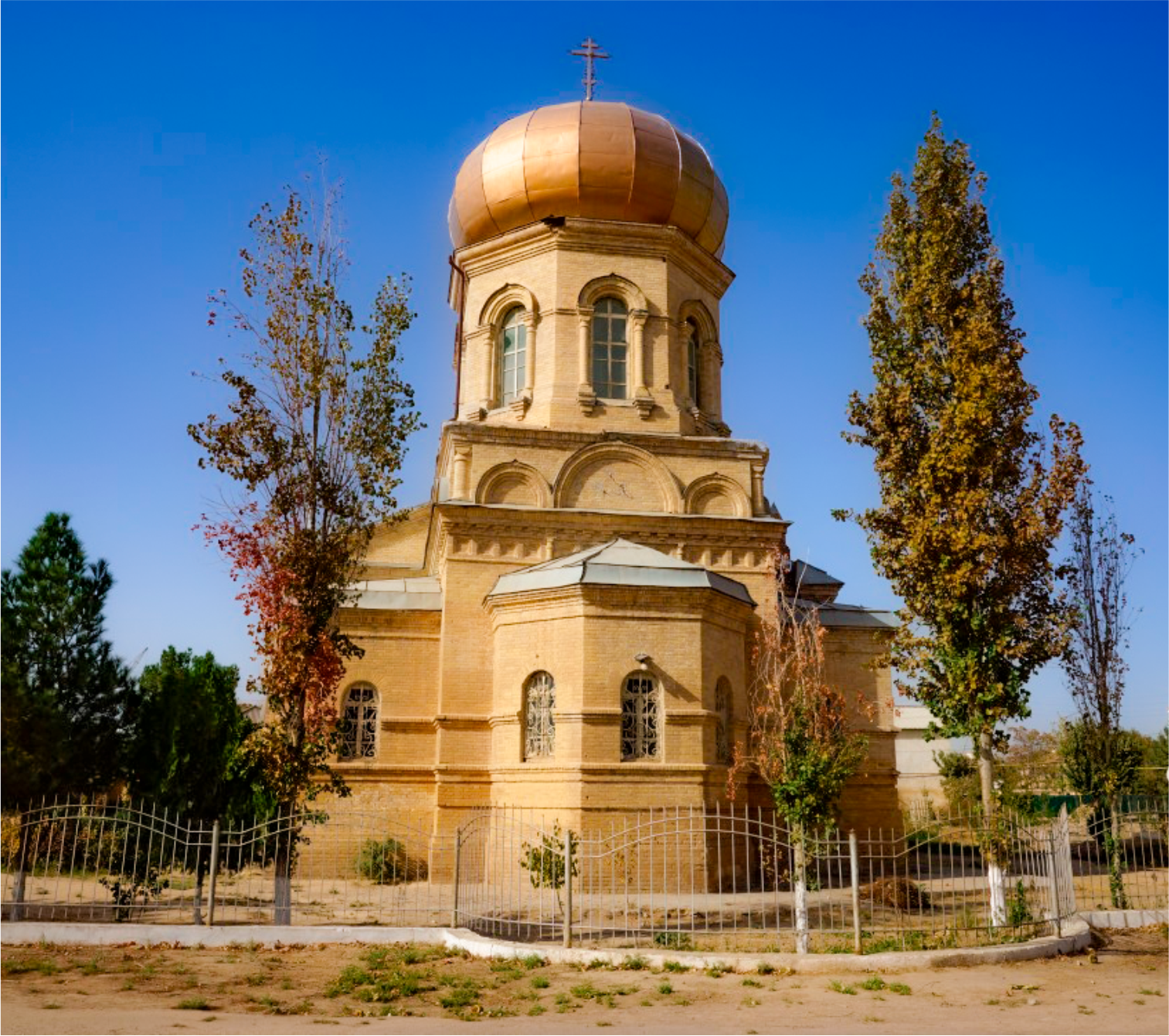
In 1901, a temple was erected in the city of Termez in honor of the Holy Prince Alexander Nevsky. Currently, the temple is in excellent condition. The sanctuary is impressive in its scale: the bell tower and iconostasis occupy a significant space. Inside the temple there is a room measuring 24 by 16 meters. In addition, the temple is rich in icons and church objects.
Kurganzol Fortress
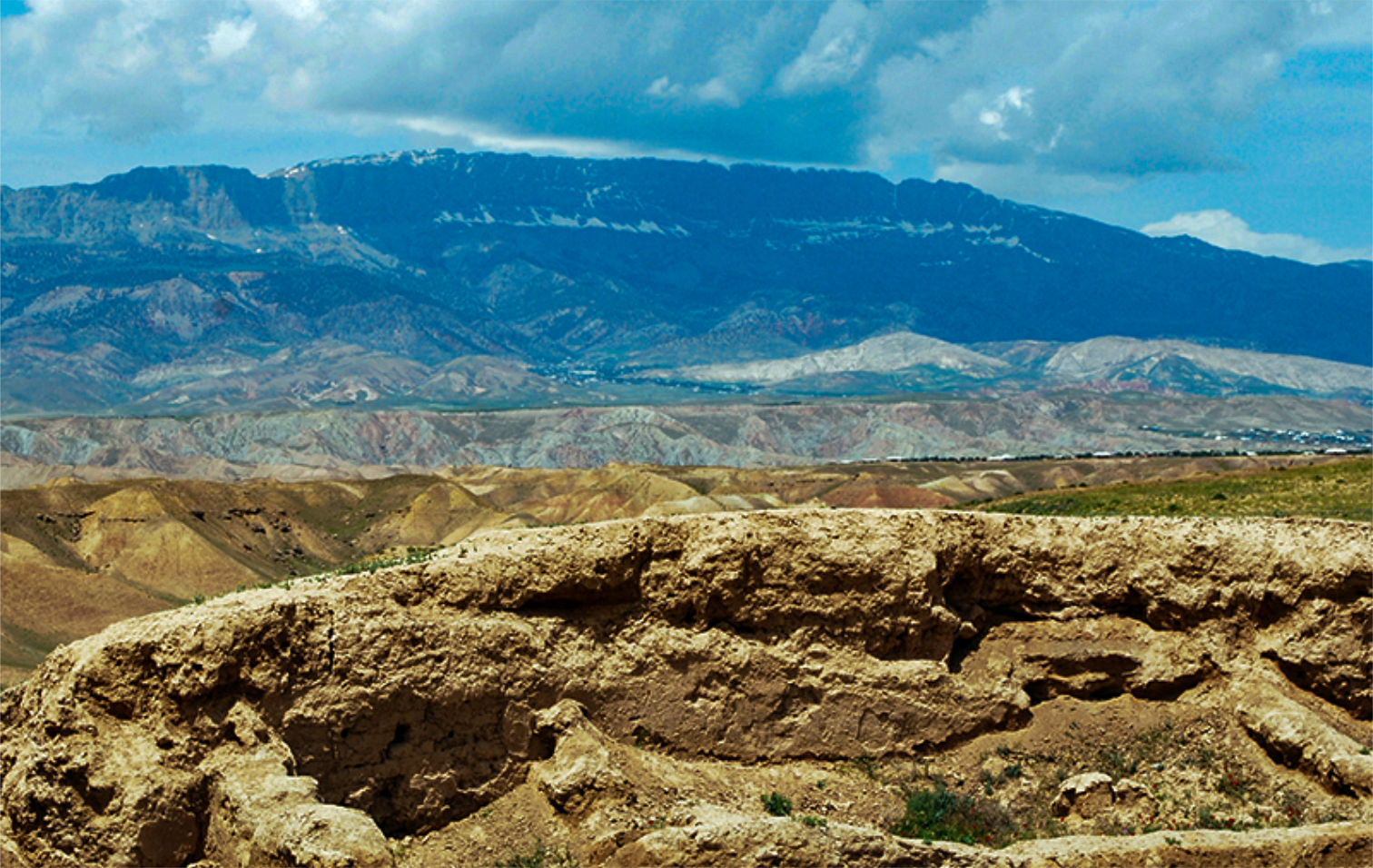
The Kurganzol Fortress is an impregnable structure built in 328 BC by Alexander the Great, which is located on a cliff near Baysun at an altitude of 900 meters. Archaeological excavations of Kurganzol began back in 2003 and it turned out that it belongs to the Hellenistic era. The fortress dates back to the IV century BC and it is believed that there were about fifty soldiers in it, and at the entrance it was protected by six towers. It took a long time to complete the construction, as during these years nomadic tribes often attacked, destroying parts of the building. Inside the fortress, parts of residential and utility rooms, a pool for water with a drain to avoid overflow, and defensive structures were discovered. The fortress, built of mud bricks, has an outstanding appearance, since its walls are on average more than 2.5 meters thick.
Uzundara Fortress
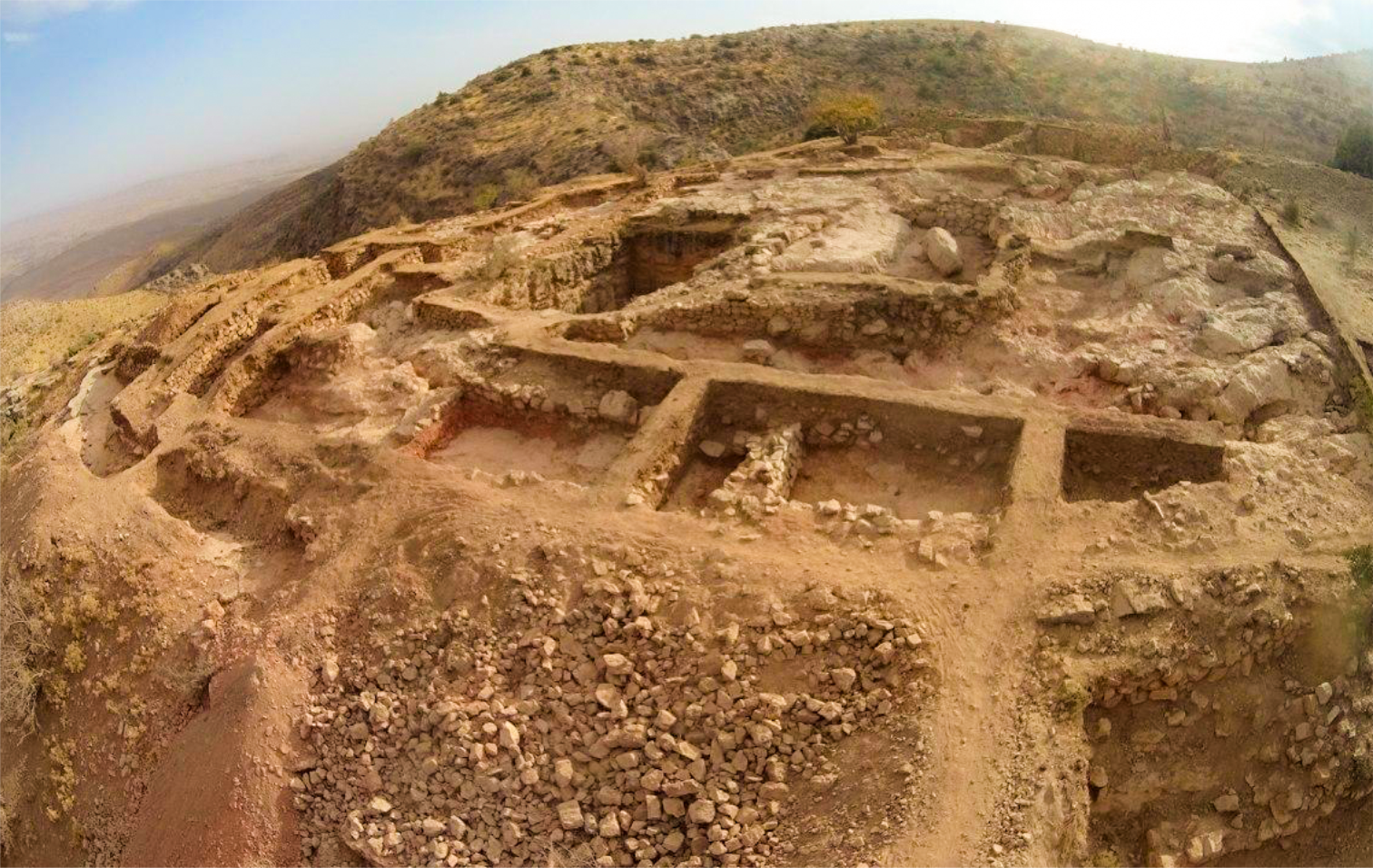
Uzundara – the oldest fortress of the III-IV centuries BC is located in the foothills of Baysun. The fortress had powerful defensive structures, including double walls reinforced with 13 towers, and parts of the outer walls up to 1 kilometer long. The fortress walls, lined with clay bricks, have almost retained their original appearance, rising 5 meters. Among the main finds discovered during the expedition are unique coins from the Hellenistic period depicting Alexander the Great, Antiochus I (king of the Seleucid state) and all the rulers of the Greco-Bactrian kingdom from Diodotus to Heliocles. The fortress, which existed for about 150 years, was destroyed due to the invasion of the nomadic tribes of the Saks and Yuejs under the rule of one of the last Greco-Bactrian kings in 171-166 BC.
Leave a comment
By logging in, you agree to the processing personal data
See also
Workhours: 9:00-18:00, Mn-Fr
For any questions
Uzbekistan


 UZB
UZB RUS
RUS JPN
JPN ARA
ARA FRA
FRA CN
CN DE
DE POR
POR ESP
ESP TUR
TUR ITA
ITA HIN
HIN MAL
MAL
A comment